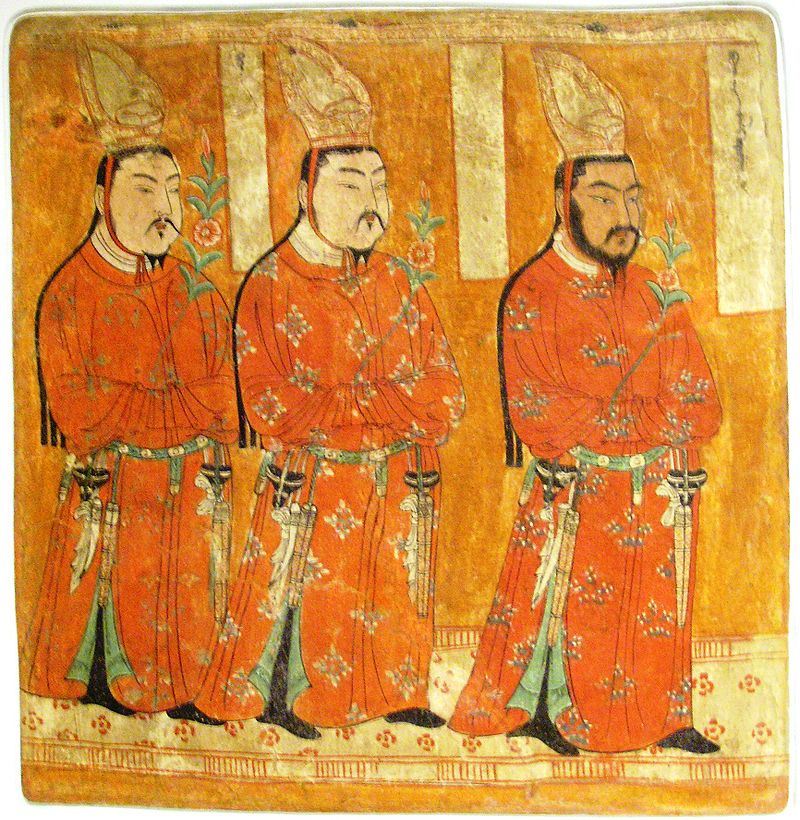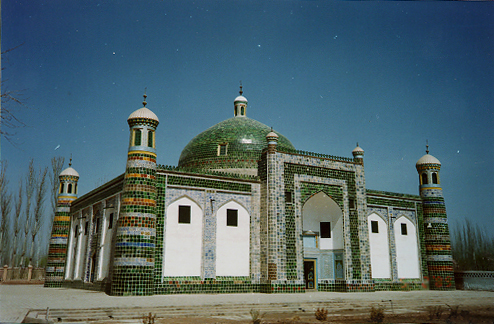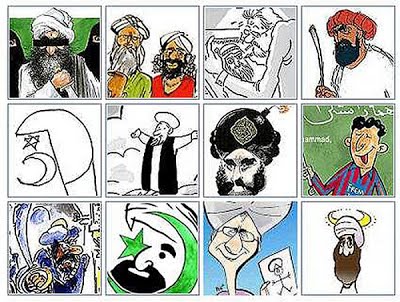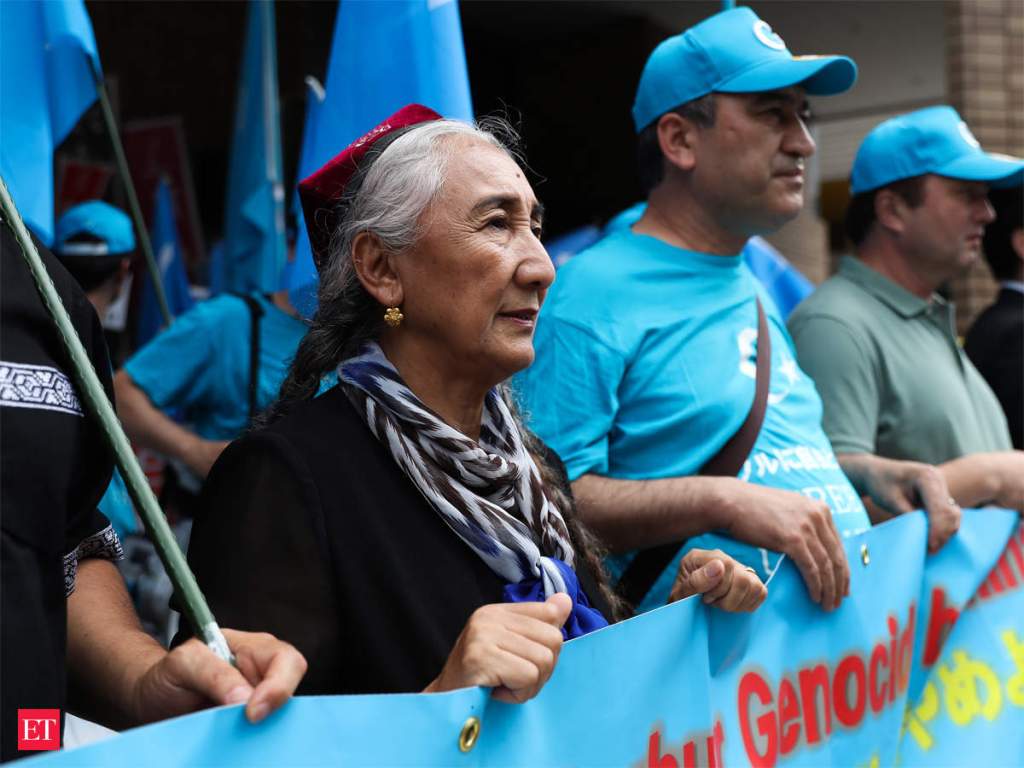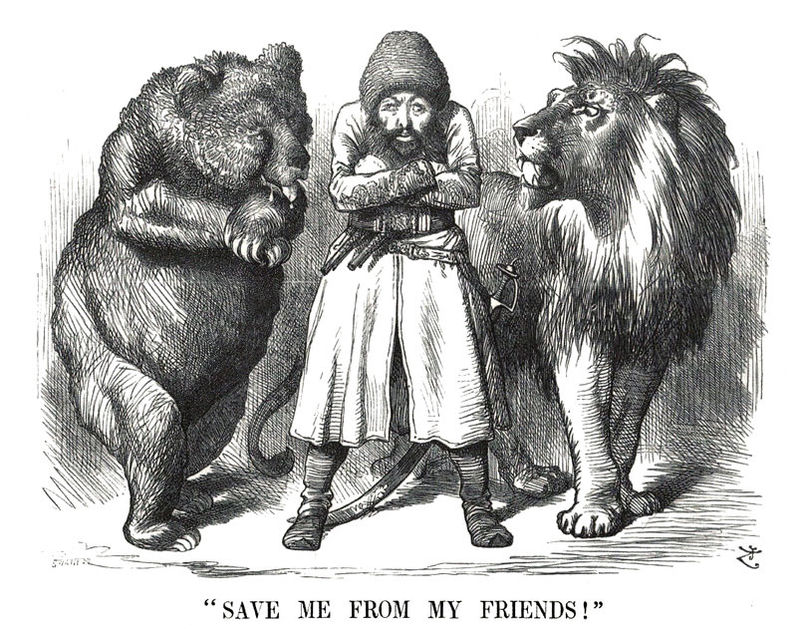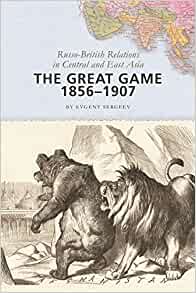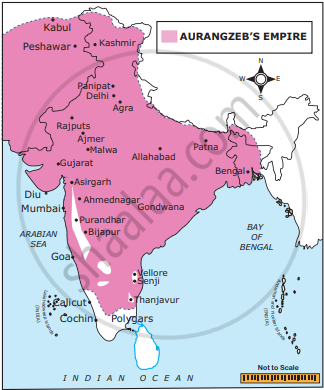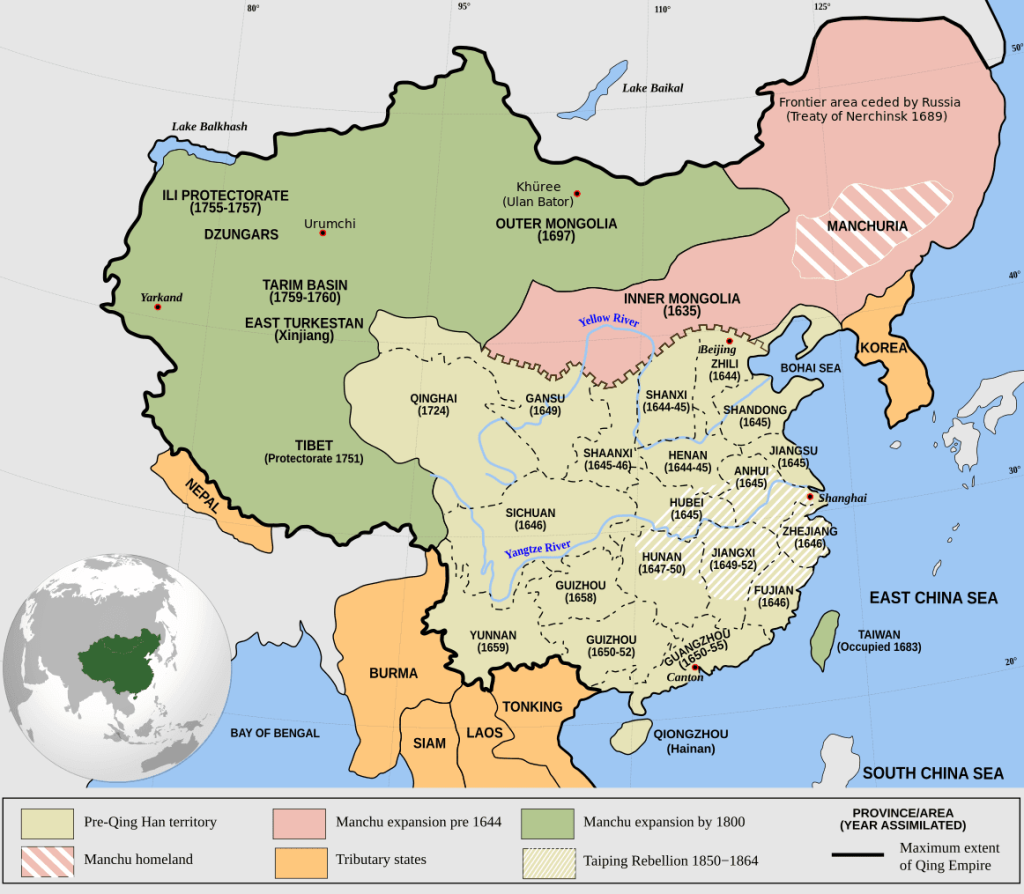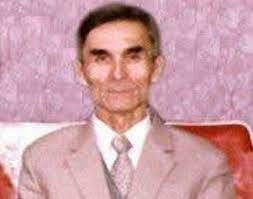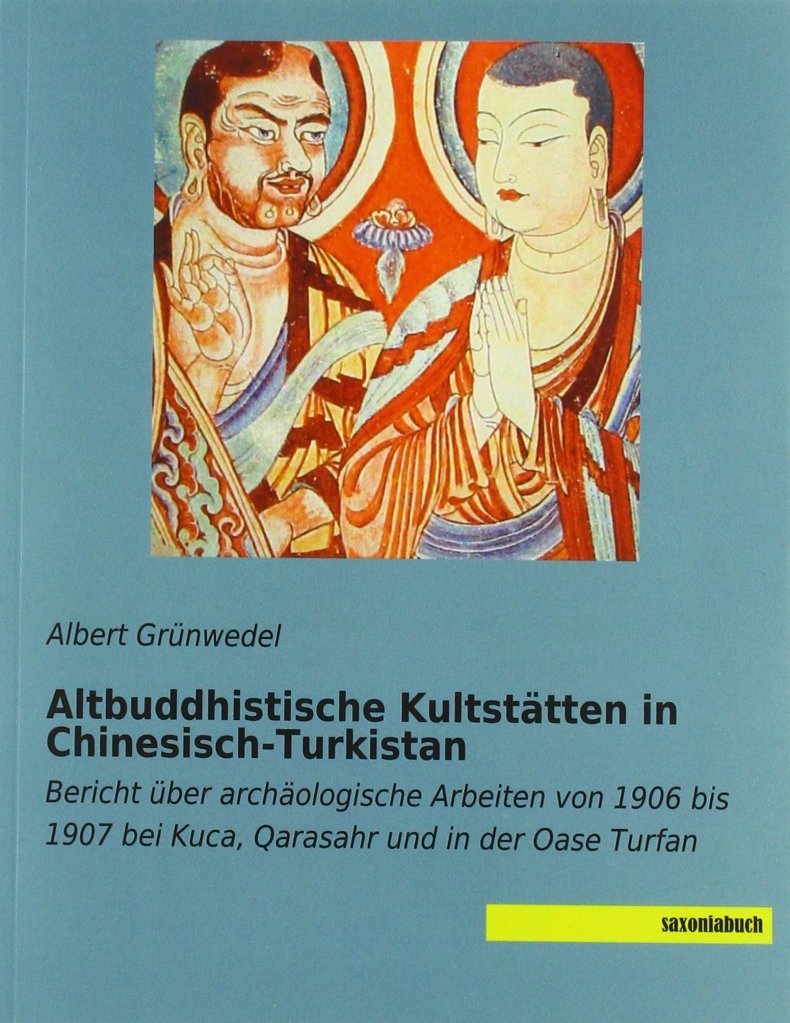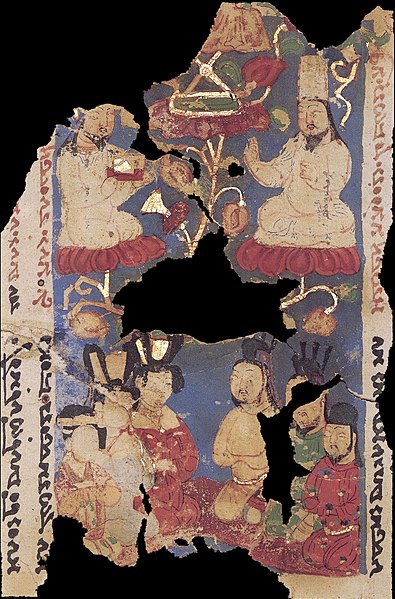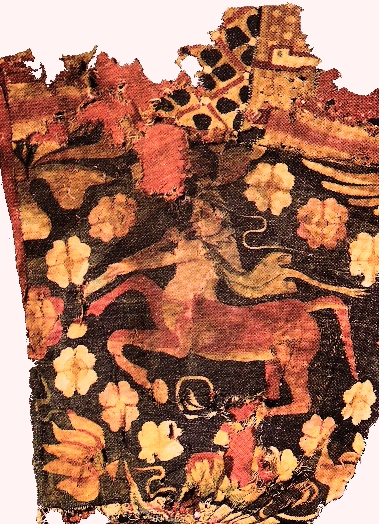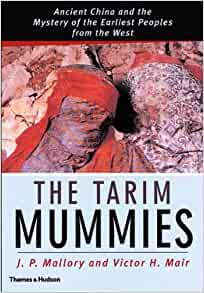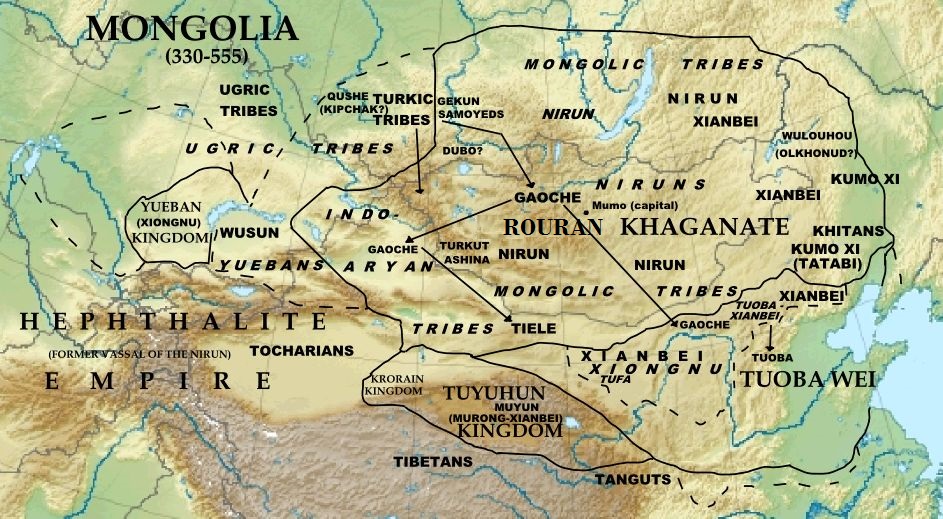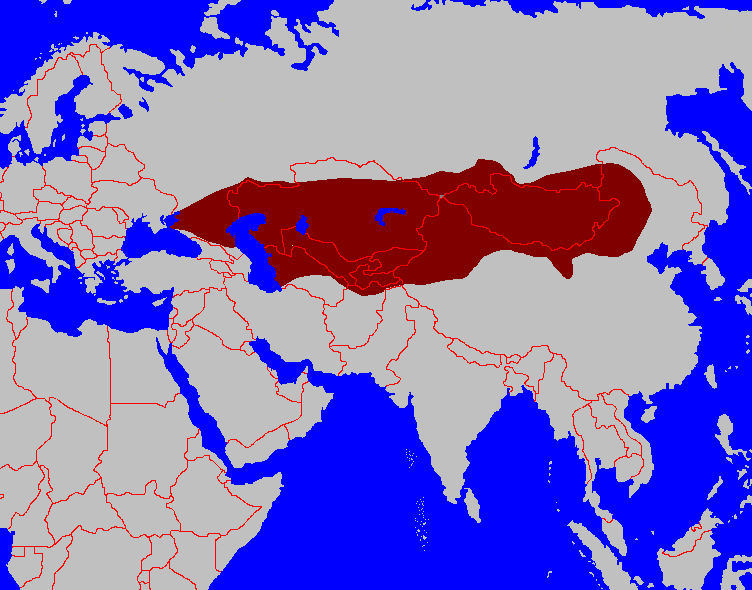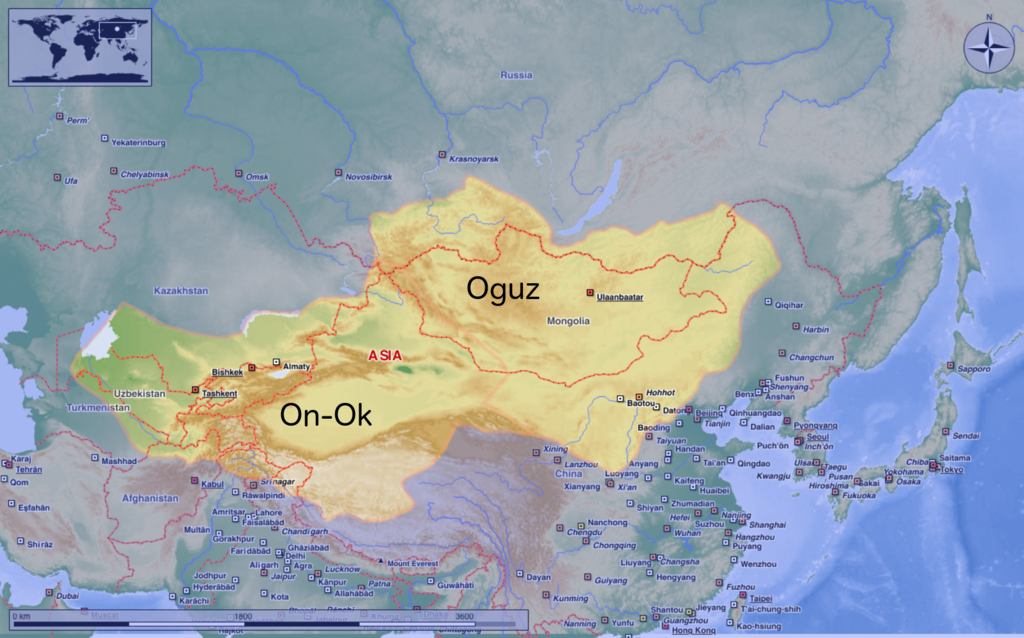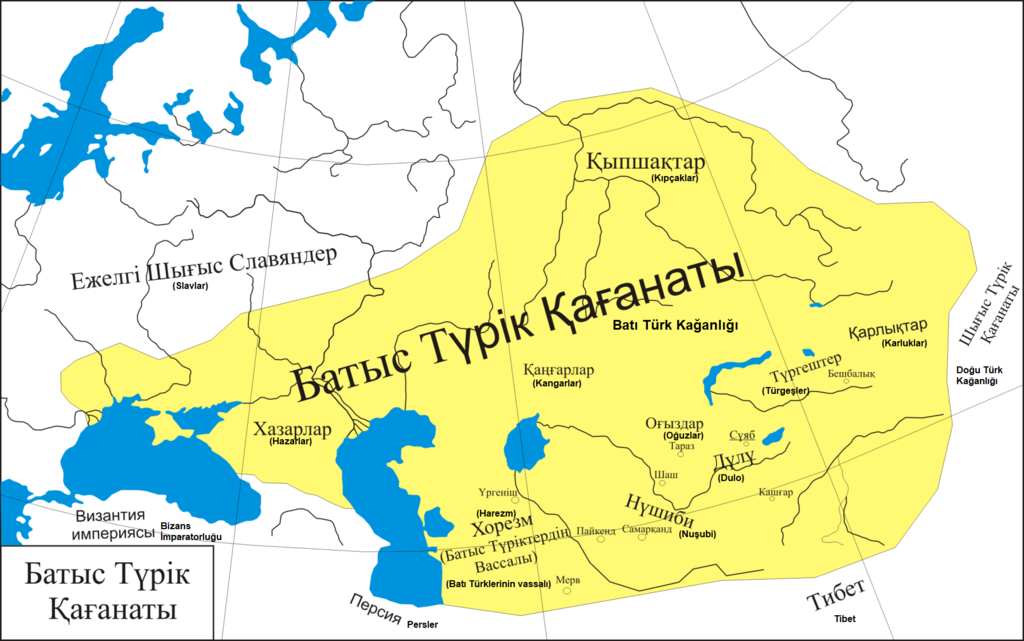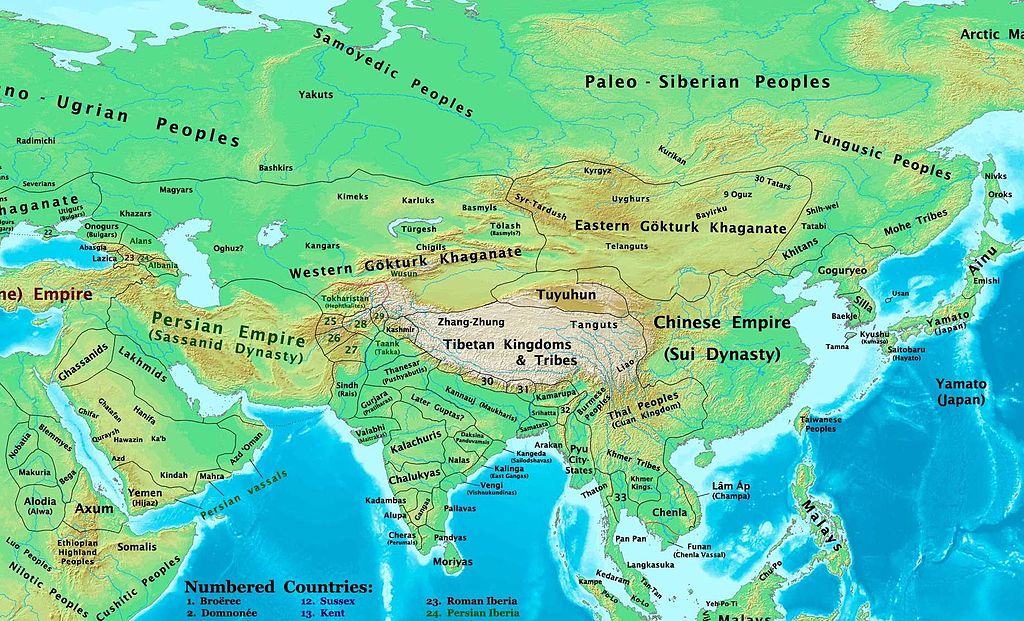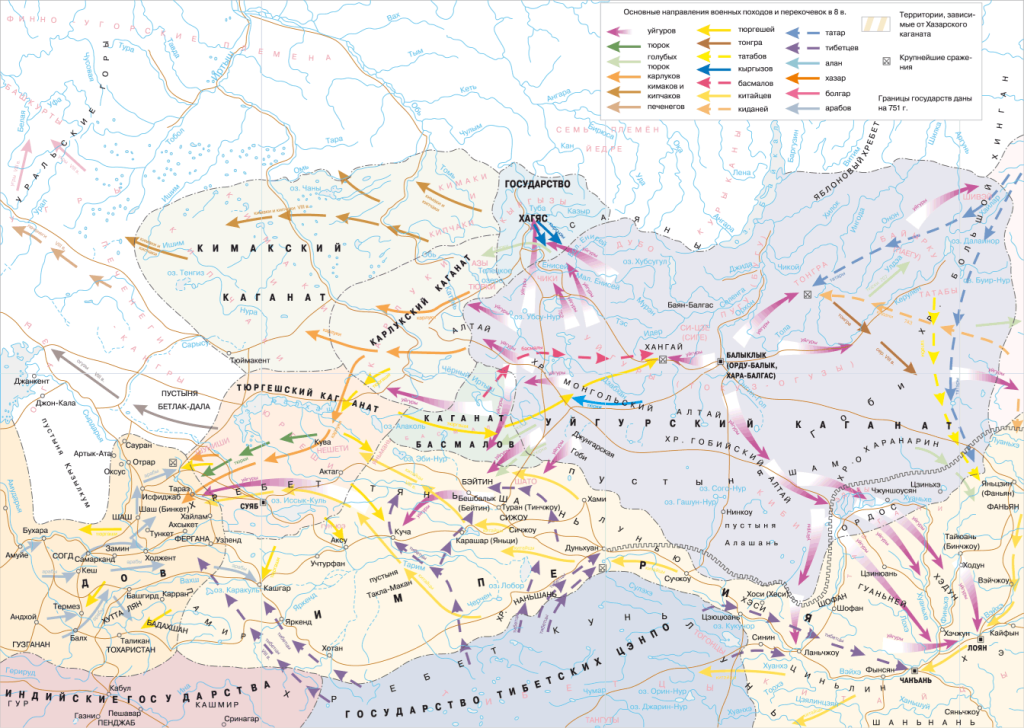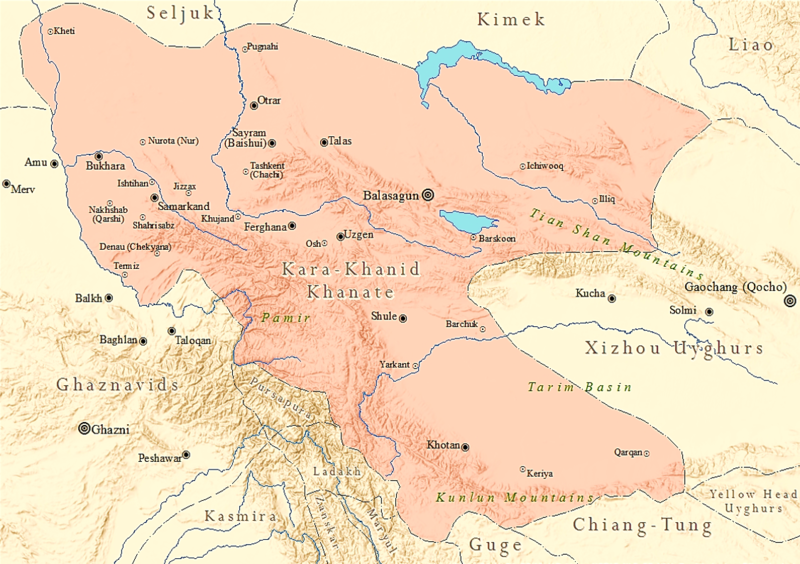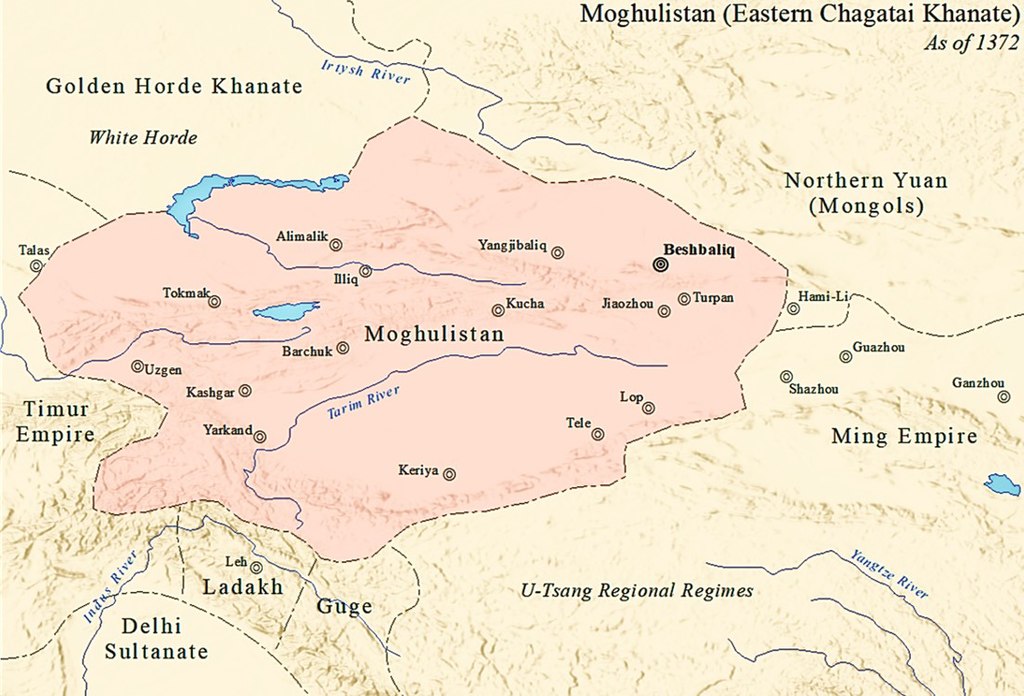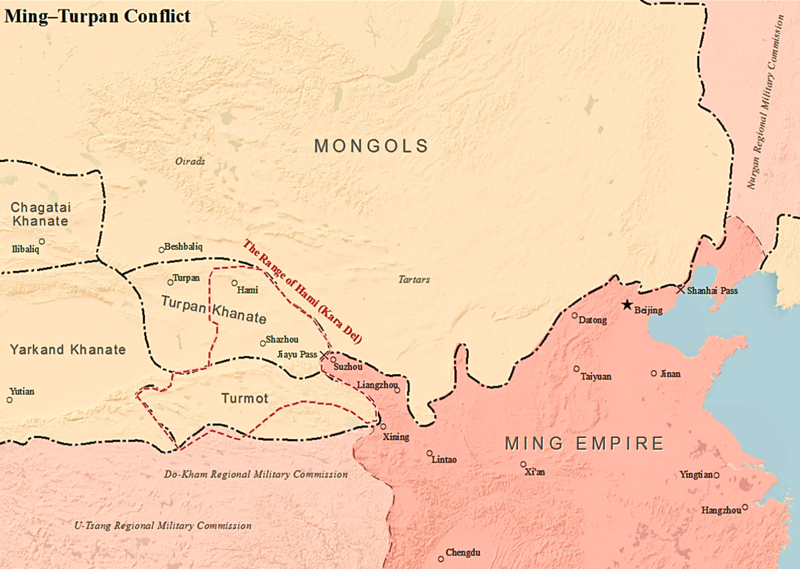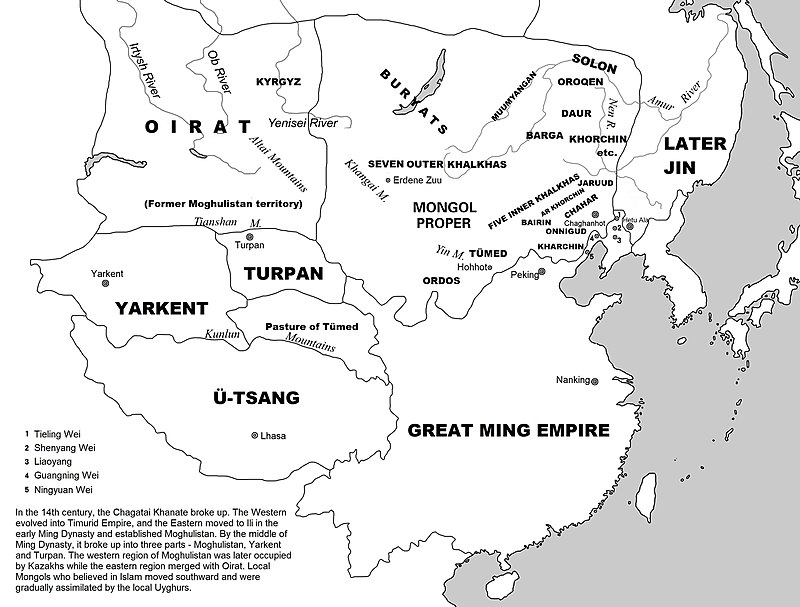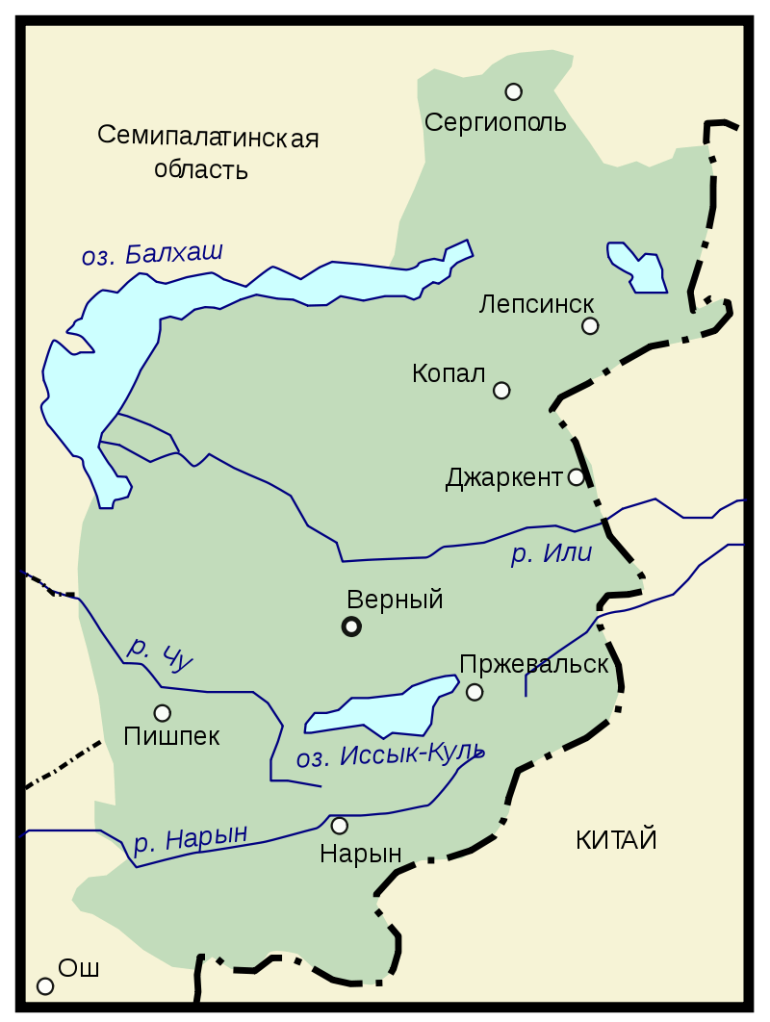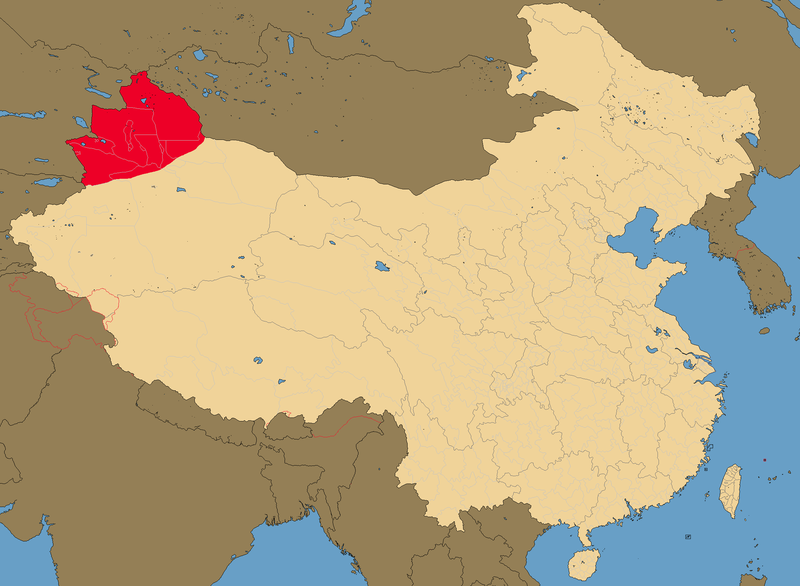Pre-publication of chapter XXIV of my forthcoming book “Turkey is Iran and Iran is Turkey – 2500 Years of indivisible Turanian – Iranian Civilization distorted and estranged by Anglo-French Orientalists”; chapter XXIV constitutes the Part Ten {Fallacies about the Times of Turanian (Mongolian) Supremacy in terms of Sciences, Arts, Letters, Spirituality and Imperial Universalism}. The book is made of 12 parts and 33 chapters.
——————————-

The Enthronement of Genghis Khan (1206); miniature of a 15th c. manuscript of the World History, known as Jami’ al-tawarikh (‘Compendium of Histories’), of Rashid al-Din Hamadani
Few years before Jalal ad-Din Rumi and Haji Bektash were born, another distinct erudite Muslim scholar, pioneering scientist and astronomer, statesman and diplomat of universalistic aspirations was born: Nasir al-Din al Tusi (1201-1274). This great man’s life was a ceaseless demonstration of the scholarly-intellectual courage to view ‘borders’ as nonexistent, ‘religions’ as immaterial, ‘states’ as worthless, and ‘institutions’ as useless. He was the epitome of human genius in every sense.
Nasir al-Din al Tusi was not the elect of spiritual hierarchies like Muḥyiddin ibn Arabi; he did not have the Love for God that we attest across the poems of Rumi, but he replaced it with the love for God’s celestial creatures that he studied incessantly and in a worldwide pioneering manner. Nasir al-Din al Tusi was not a man of spiritual potency like Shams-e Tabrizi, and in contrast to Haji Bektash, he did not have great interest to actively participate in mystical orders, which however he had the chance to frequent for long, study in-depth, and comprehend their function and limits. He did not envision atemporal heroic figures and he did not conceive apocalyptic symbolisms, as he was very different from Ferdowsi and Nizami Ganjavi, but he managed to be highly appreciated and demanded by his times’ most formidable warriors, heroic conquerors, and secretive rulers. And contrarily with Nizam al-Mulk, who specified the rules of perfect governance, Nasir al-Din al Tusi used these rules to make kings’ and emperors’ governance useful to him and beneficial to mankind.
Above all, Nasir al-Din al Tusi was the Muslim, who personally controlled the various stages of the Mongol invasion and -most demanded- destruction of Baghdad (1258). Through his personal involvement as mediator or envoy, he helped the Buddhist Mongol emperor Hulagu (1218-1265) carry out the total demolition of the Abbasid capital. This historical event was not a ‘major historical development’ as many are inclined to believe today, because for many hundreds of years, Baghdad had lost its earlier importance as center of the world’s most immense and most formidable empire; in the middle of the 13 th c., the greatest capital of the Islamic world did not anymore have its hitherto unsurpassed significance as the world-center for letters, sciences, academic life, exploration, manuscript collection and translation, archivism, and arts. Baghdad was then only the shadow of the former Abbasid glory and splendor.
It has however to be underscored that the above description of the one-time Abbasid opulence was not the only way Muslims across the Islamic world viewed Baghdad at the time; the fallen Abbasid capital was also viewed as the palace of cruel rulers and unjust caliphs who imprisoned, poisoned and massacred several descendants of Prophet Muhammad and Ali, as the headquarters of deceitful potentates who misinterpreted Islam only to adjust it to their material needs and interests, and as the location of impotent, decayed ‘caliphs’ who for no less than ca. 350-400 years were more powerless than a single soldier and depended therefore on the mercy of the various secessionist emirs, sultans and shahs, who held the real imperial power in the regions of their states. In other words, for most of the then Muslims, Baghdad was not anymore a ‘glory’ but a disgusting ‘shame’.
Furthermore, long before the 13th c., numerous centers of Islamic spirituality, mysticism, letters, sciences, arts, philosophy and theology had already been established between the Atlantic Ocean and China and from the steppes of Siberia to the coast of today’s Tanzania and Mozambique. The annihilation of Baghdad’s library (with an estimate of about a million manuscripts) would not be and actually was not a detrimental and calamitous fact, as the mendacious modern Western historians and Orientalists try to depict. Spiritual, intellectual, academic, scientific, philosophical, and artistic life and creativity would continue and did indeed continue elsewhere.
In addition, very few contemporaneous Muslims ‘cried’ for the fall of the Abbasid capital; one of them was the already famous Saadi Shirazi (1210-1291), one of Iran’s greatest poets who exerted enormous impact on Iranians and Turanians. But at the time, this side was rather an insignificant minority.
Last, one must also point out that this event was not a religious war, and it was not then viewed as such, because there were many Muslims on the side of Hulagu, and of his official envoy Nasir al-Din al Tusi. They viewed the destruction of Baghdad as a God-sent present.
Colonial Orientalists shed interminable crocodile tears for the loss of what was indeed the greatest accumulation of manuscripts, written sources, and academic – intellectual heritage throughout the History of Mankind before modern times. The hypocritical Western academic attitude constitutes only a deceitful attempt and a divisive racist policy intended to generate frictions among Muslims and to turn fake entities, like the so-called ‘Arab Sunnis’ and the ‘Shia Iranians’, against one another. At the same time, the fallacious representation of this minor historical event helps produce Anti-Turanian, Anti-Turkish, Anti-Mongolian, and Anti-Buddhist hatred and rancor among uneducated, ignorant and idiotic Muslims.
In fact, any material record, any accumulation of written documentation, any library and archival institution has no value per se; humans and human life give its value to everything material. The treasures of 13th c. Baghdad’s libraries were to great extent copied and diffused from Andalusia to China. In any case, Baghdad would never again regain its 8th–9th c. position as the leading center of world’s knowledge, wisdom, science and spirituality; 500 years after its foundation, the Abbasid capital resembled, truly speaking, a mortuary.
As far as today’s ignorant and uneducated Muslims are concerned, it is extremely nonsensical and unprecedentedly shameful to express indignation for Baghdad’s destruction at the hands of Hulagu. What would actually their 18th, 19th and 20th c. ancestors have done, had Hulagu (or anybody else) not destroyed Baghdad? Judging from modern Muslims’ disgustingly materialistic approach to life and indifference for their own cultural heritage, they would have stupidly and inanely sold all these hundreds of thousands of supposedly remaining manuscripts to European and North American explorers, antiquaries, agents, diplomats, Orientalists, merchants and travelers, as they already did with what was left in other places. So, perhaps one can conclude that Hulagu’s only mistake was that he did not exterminate the entire population of the wider region to adequately purify the land, and thus prevent its putrefaction at a later age.
Nasir al-Din al Tusi was born in Tus to a theologian and jurist father; he studied in Neyshapur, Hamadan, Mosul and Baghdad. He encountered Attar of Neyshapur and Sadr al-Din al-Qunawi, who was a student of Muḥyiddin ibn Arabi and a friend of Jalal ad-Din Rumi. Although he was familiar with spiritual exercises, mystical doctrines, and philosophy, Nasir al-Din al Tusi had a greater interest for medicine, mathematics, natural sciences, and astronomy. In rather young age, he was already viewed as an exemplary young scientist and scholar, and he was noticed by many known and surreptitious people.
Among the latter, the Isma’ili governor of the city Sartakht in Quhestan (: i.e. ‘mountainous land’: the southeastern part of Khorasan) invited him (1233) to work on several projects. Writing about teaching ethics to children and conversing with a high dignitary of the Isma’ili (the so-called ‘Sevener Shia’) administration, which also controlled several cities and provinces (except their headquarters, which constituted a real enclave inside the caliphate), Nasir al-Din al Tusi became familiar with the practices of governance held by mystical orders; he emphatically disliked this.

Nasir al din al Tusi with his associates and students, working in the then world’s most important observatory at Maragheh, East Azerbaijan-Iran; miniature of manuscript dating back to 1562, 300 years after the erection of the Maragheh Observatory

Two pages from a manuscript of Nasir al Din al Tusi’s ‘Treatise on the Astrolabe’ that dates back to 1505 (found in Isfahan).

Two pages from Nasir al Din al Tusi’s ‘Compendium of treatises on Astronomy and Mathematics’ from a manuscript dating back to 1279

Kitab tahrir al-usul li-Uqlidis (Commentary on Euclid’s Elements); each page with 19 lines of Maghribi script within double rules (with numerous diagrams); from: Fes (Alawi Morocco), al-Matba’ah al-‘Amirah, Khidmat al-‘Arabi al-Azraq (colophon with name of Sultan Muley Hassan), [1 Nov. 1876 CE =] 13 Shawwal 1293 H.

The Tusi couple from Vatican Arabic manuscript 319

Kitab Tahrir Usul li’Uqlidis (Elementorum Geometricorum) recension by Nasir al-Din al-Tusi, first printed edition by the Medici Press (Typographia Medicea), Rome, 1594

Modern reconstruction: the dome of the Maragheh observatory

Central Tower of the Maragheh Observatory

Contemplation and Action: the Spiritual Autobiography of a Muslim Scholar – Nasir al-Din Tusi by Seyyed Jalal Hosseini Badakhchani

Nasir al Din al Tusi’s Maragheh Observatory and Library with 400000 manuscripts

Al Maragheh


Tashkent manuscript of Nasir al-Din al-Tusi’s treatise ‘Collection of Arithmetic’ (Jami’ al-hisab bi-‘l-Takht wa-‘l-turab), folio 120
However, he also had the experience of staying long in Alamut, the Isma’ili order’s headquarters which were located in an almost inaccessible mountainous region in Alborz, namely the range that separates the Caspian Sea from the Iranian plateau. There, Nasir al-Din al Tusi’s fame as a scientist and philosopher grew among the local Isma’ilis tremendously, and he became widely known across the Islamic world. He thus lived no less than 20 years in Alamut, being cut off from the rest of the world, but surrounded by dozens of thousands (if not more) of manuscripts.
https://mathshistory.st-andrews.ac.uk/Biographies/Al-Tusi_Nasir/
https://iranicaonline.org/articles/tusi-nasir-al-din-bio
https://iranicaonline.org/articles/tusi-nasir-al-din-mathematician-astronomer
https://en.wikipedia.org/wiki/Nasir_al-Din_al-Tusi
https://www.cambridge.org/core/journals/journal-of-institutional-economics/article/nasir-addin-tusi-on-social-cooperation-and-the-division-of-labor-fragment-from-the-nasirean-ethics/866D4BA0EA8C7BA5493767E465113B63 This was a period in which the entire world was transformed into a Turanian Eurasiatic Empire. The achievement was unprecedented, but the method was known. Simply the family of Temüjin Borjigin (later known as Genghis Khan; 1162-1227) eclipsed by far the family of Seljuk. There is a slight but noticeable difference in the attitude of both families’ patriarch; whereas Seljuk fled straightforwardly to another region, Temüjin fought numerous battles before prevailing among first the Mongols and later the various Eastern Turanian (: Mongolian) nations. Whereas Temüjin was elected khan of the Mongols in 1186 (when he was 24 years old), it took him 20 years of incessant battles to prevail among all the surrounding Turanian nations, i.e. the Naimans, the Merkits, the Tatars, the Khamag Mongols, and the Keraites. Only in 1206 Temüjin became the undisputed and sole ruler of all the Eastern Turanian nations, thus controlling a sizeable nomadic empire.

Genghis Khan: from a 14th c. Yuan era Chinese album originally painted in 1278

Börte & Genghis Khan from a 16th c. manuscript: along with Hoelun Ujin, the emperor’s mother, she was the person that impacted the conqueror most.
However, long before Temüjin’s spectacular successes in the South (China) and the West (Central Asia, Western Siberia, Iran, Caucasus and Eastern Europe) took place (which occurred only after he was 50 years old), critical developments had happened to his family, and they determined the future of his offspring and the destiny of his immense empire. At a certain moment, during Temüjin’s early combats, his principal wife Börte (who was by then already pregnant) was taken captive by Temüjin’s contenders for some months. This event decisively compromised the way she was viewed afterwards; when she was liberated only few months later, she gave birth to Temüjin’s son, Jochi (1182-1227).
These circumstances did indeed cast a doubt about Jochi’s real father. Although Temüjin fully and unreservedly recognized Jochi as his first son, the story reached the ears of his other three sons (from Börte) at a later moment; this development irrevocably compromised Jochi’s chances to succession. Among Temüjin’s next sons, i.e. Chagatai (1183–1242), Ögedei (1186–1241), and Tolui (1191–1232), Chagatai announced his intention never to accept Jochi as Temüjin’s succession; to properly address the situation, Temüjin appointed Ögedei, his third son, as successor to both, remove doubts and castigate disloyalty. Jochi died few months before his father, but the aforementioned situation predetermined the future of the four brethren’s sons, and actually caused several conflicts among them and even among the younger generation, i.e. Temüjin’s grandchildren.

Basic source of information for the early stages of the Mongolian Turanian Empire is the ‘Secret History of the Mongols’; page from a 1908 Chinese edition (Mongolian text in Chinese transcription, plus a small glossary next to each column); the imperial historiographical source was written in Mongolian little time after the death of the great conqueror by an anonymous author as per the traditional imperial criteria. All surviving texts are transcriptions in Chinese characters and translations that date back to the 14th c. when the early Ming dynasty administrators wanted to offer an imperial narrative about the previous dynasty. A modern English translation of the Secret History of the Mongols can be found here: https://jigjids.files.wordpress.com/2011/05/the_secret_history_of_the_mongols_the_life_and_times_of_chinggis_khan1.pdf

‘Secret History of the Mongols’: the oldest copy preserved in Ulaanbaatar, capital of Mongolia

Mausoleum of Genghis Khan in Ordos, Inner Mongolia, China (not a personal tomb)
Temüjin was a staunch monotheist, and he observed the traditional rites of his religion, Tengrism. The early Turanian religion is a form of monotheism based on transcendental experience, spiritual exercises, utmost morality, military discipline, and universal perception of the world. Sticking always to meritocracy and combating favoritism, Temüjin was an extroverted man with great interest for the religious and spiritual beliefs of surrounding nations: he was therefore in constant contact with Buddhist monks, Manichaean Elects, Nestorian Christian clergymen, Muslim imams, and Taoist priests, being conversant in their respective faiths and cults. When he was not at the battlefield, Temüjin had also literary interests and to fight illiteracy, he introduced among Mongolians the Uyghur writing system, which had been attested as early as the 5th c. CE in Sogdian characters, being therefore of Aramaic origin.
The great expansion of Temüjin’s empire occurred in the period 1206-1227, when the situation across his realm was already stable, solid and untroubled. Until 1211, Temüjin (Genghis Khan) conquered the nomadic Tangut Empire (‘Western Xia’ dynasty), another Turanian Empire located west of Temüjin’s territory. In the period 1211-1215, invaded the Northern Chinese kingdom (Jin dynasty), sacking Zhongdu (: the old Beijing city, capital of Jin China) in the process; the North Chinese king Xuanzong fled to the South, therefore losing more than half of his territory to Temüjin. In 1218, the ever improving armies of Genghis Khan defeated Qara Kitai, another nomadic Turanian Empire that was located west of the already demised Tangut Empire. This means that for the first time in the History of Eurasia an empire controlled all the lands between Lake Balkhash (in today’s Eastern Kazakhstan) and the coastlands of Northeast Asia, also including the northern half of today’s China. By that time, Temüjin’s empire bordered with the Turanian Empire of Khwarazm (Chorasmia) that stretched from the eastern coastlands of the Caspian Sea to today’s Eastern Kazakhstan and down to the Persian Gulf and Straits of Hormuz.

The Mongol Empire around 1207

The Serven Khallga inscription that contains the narrative about the 1196 campaign against Tatars; about: https://www.scribd.com/document/628906144/GENEI-NGIS-KHAN?irclickid=woDSqsSeWxyNUxZS3K3eC293UkF2Wh37l1K8040&irpid=2334778&sharedid=https%3A%2F%2Fwww.yieldkit.com%2F&irgwc=1#

Central, Southern, Northern and Eastern Asia in the early 13th century

Genghis enters Zhongdu (Beijing) in 1215; miniature from Jami al-tawarikh

The campaigns Genghis Khan in the period 1207-1225
From 1219 to 1223, an incredible thunderstorm hit Western Asia and Eastern Europe. Following the devastating defeat of Khwarazm (1221), Temüjin’s armies invaded the western parts of Central Asia and today’s Iran, Afghanistan and Pakistan, engaging in successive ferocious battles; in one of them, Chagatai’s firstborn son Mutukan died (in Bamian). During the next two years, Eastern Anatolia, Caucasus, Crimea, today’s Ukraine and today’s Russia’s southern half were conquered by the Turanian armies led by Temüjin’s family members and relatives. The Christian state of Kievan Rus (which is spiritually rather than ethnically related to Modern Russia) collapsed after the defeat in the Kalka River battle.

Jalal al-Din Mangburni (also known as Jalal al-Din Khwarazmshah), the last of Khwarazm, crosses the Indus River trying to escape from the Mongolian forces; from a late 17th century manuscript of Jami al-tawarikh (by Rashid al Din Hamadani)
With the invasion of the multi-religious Turanian Cuman–Kipchak confederacy and following the annexation of the Muslim Turanian Khanate of Volga Bulgaria, the first two sizeable Turanian kingdoms in Europe took an end, after having lasted for more than 400 years. The khanate of Volga Bulgaria had been a Muslim state since 922 (so for more than 300 years before its demise), thus representing a major chapter of Europe’s Islamic past and identity. This highlights the fact that Islam antedates Christianity in Eastern Europe. As a matter of fact, the Volga Bulgarian ruler Almış sent an embassy to Baghdad, asking for religious instructors; in response to his demand, Ibn Fadlan (ca. 880 – ca.960) was dispatched at once to teach Islamic faith, theology and jurisprudence there. About:
https://en.wikipedia.org/wiki/Genghis_Khan
https://en.wikipedia.org/wiki/Jochi
https://en.wikipedia.org/wiki/Chagatai_Khan
https://en.wikipedia.org/wiki/%C3%96gedei_Khan
https://en.wikipedia.org/wiki/Tolui
https://en.wikipedia.org/wiki/The_Secret_History_of_the_Mongols
https://en.wikipedia.org/wiki/Organization_of_the_Mongol_Empire_under_Genghis_Khan
https://en.wikipedia.org/wiki/Mongols
https://en.wikipedia.org/wiki/Mongol_Empire
https://en.wikipedia.org/wiki/Mongol_conquest_of_the_Khwarazmian_Empire
https://en.wikipedia.org/wiki/Inalchuq
https://en.wikipedia.org/wiki/Mongol_invasions_of_Georgia
https://en.wikipedia.org/wiki/Mongol_invasion_of_Volga_Bulgaria
https://en.wikipedia.org/wiki/Volga_Bulgaria
https://en.wikipedia.org/wiki/Mongol_conquest_of_Jin_China
https://en.wikipedia.org/wiki/First_Mongol_invasion_of_Poland

Kimek–Kipchak confederation (880–1035)

Cuman–Kipchak Confederation, also known as Desht-i Qipchaq (10th century–1241)

Greatest extent of Volga Bulgaria – More maps: http://s155239215.onlinehome.us/turkic/70_Dateline/72_Bulgars/bulgar_dateline_1_En.htm
Little resistance was attested following the Turanian conquests undertaken by Genghis Khan’s (:Temüjin’s) armies, and this is due to the religious-cultural tolerance that prevailed everywhere after the largest part of Eurasia was invaded and unified in about 20 years. The only significant rebellion took place in Tangut, and it was squelched by Temüjin who died next year.
Ögedei became the 2nd Khagan of the Turanian Mongolian Empire. In the period between 1227 and 1241, he carried out military campaigns across Central Asia, Khorasan, Iran, Afghanistan, and Caucasus (1230), he invaded Korea (1231), and he completed the invasion of China (1230-1234), bringing about the final fall of the Jin dynasty. His armies carried out numerous campaigns in the wider Caucasus region (1232-1240), squelching revolts and conquering remote mountainous spots. During the period 1235-1241, Ögedei’s firstborn son Güyük Khan (1206-1248) and other relatives and generals invaded Eastern, Southeastern and Central Europe; Güyük Khan’s half-brother Kadan, Jochi’s second son Batu (c. 1207–1255) and Mutukan’s son Büri (Chagatai’s grandson) were also present in the invasions, leading armies and engaging in battles and sieges; the former territories of Kievan Rus and today’s Poland, Slovakia, Czechia, Hungary, Romania, Bulgaria, Croatia and parts of Germany were swept and conquered.
Chagatai outlived his younger brother and 2nd Khagan of the Turanian Mongolian Empire by one year; with Ögedei as Khagan, Chagatai was entrusted with the administration of a vast Central Asiatic territory, which became later known as the Chagatai Khanate and under different forms and dynasties survived until ca. 1700. With capital at Almaligh (close to today’s Chinese – Kazakh border in Eastern Turkestan / Sinkiang), Chagatai favored Tengrism over Islam, causing hostility among his country’s Muslims, whose bulk inhabited the western and southern provinces of the vast state. Quite contrarily, he tolerated Nestorian Christianity, Manichaeism and Buddhism.
After participating in his father’s and older brother’s campaigns, Tolui sacrificed himself to save Ögedei from an illness caused by China’s spirits of Earth and Soft Waters; as per the description available in ‘The Secret History of the Mongols’, the earliest historical record in Mongolian language, Tolui by his own will drank a cursed potion to appease the spirits and heal his brother, therefore dying in the process.

Genghis Khan and Jochi standing in the left

Jochi Mausoleum, Ulytau-Kazakhstan

The funerals of Chagatai Khan

Coronation of Ögedei, from a 14th century’s manuscript of Rashid al-Din Hamadani’s Jami’al Tawarikh

Ögedei portrait from the times of Yuan dynasty 47×59 cm

Tolui

Mongol army captures a city of the Kievan Rus state (16th c. Russian miniature)
Among the generation of Genghis Khan’s grandsons prominent role played the following:
i. Ögedei’s sons Güyük Khan (1206-1248; 3rd Khagan of the Turanian Mongolian Empire for the period 1246-1248), Godan Khan (1206-1251), and Kadan;
ii. Chagatai’s sons Mutukan (died 1221), Baidar (who participated in the European campaign and was present in the election of Güyük Khan in 1246), and Yesü Möngke (Khan of Chagatai Khanate for the period 1246-1252, after and before Mutukan’s son Qara Hülegü, who was twice Khan of Chagatai Khanate: 1242-1246, 1252);
iii. Tolui’s sons were the luckiest in terms of posterity and imperial prevalence. Tolui was the regent of the empire for a certain period. His historically important sons were: Möngke Khan (1209–1259) 4th Khagan of the Turanian Mongolian Empire (1251-1259), Kublai Khan (1215–1294) Emperor of China (1st Emperor of the Yuan dynasty: 1271-1294) and 5th Khagan of the Turanian Mongolian Empire (1260-1294; however his imperial power at this level was only nominal due to the empire’s division), Hulagu Khan (1217–1265) who was tasked by Möngke Khan in 1251 to destroy Western Asia’s remaining Islamic states, and Ariq Böke (1219–1266; known for his Nestorian Christian sympathies) Khagan of the Mongol Empire (a title with only nominal value due to the empire’s division), who clashed with Kublai Khan and finally got imprisoned and then poisoned;

The empire of Möngke Khan
iv. Jochi’s sons Orda Ichen (c. 1206–1251; participant in the invasion of Kievan Rus’ in 1237-1242) Khan of the Golden Horde Eastern Half (White Horde; 1226-1251), Batu (c. 1207–1255) Khan of the Golden Horde Western Half (Blue Horde; 1227-1255), and Berke, Khan of the Golden Horde Western Half (Blue Horde; 1257–1266), who was the first member of the Genghisid family to have become Muslim.
From the above, it can be understood that, despite the consented, appropriate and fair-minded division of Genghis Khan’s empire among his sons and grandsons, several disputes took place, and soon after Güyük Khan’s tenure as the 3rd Khagan, the supreme title shifted to the progeniture of Tolui; nevertheless, the empire was so immense to possibly supervise that Möngke Khan was practically the last to be effective as Khagan of the Turanian Mongolian Empire.
Many depict the great events of the period 1219-1258 as a unique moment in the history of mankind, but in reality, Eurasia had indeed experienced several similar cases before. Where does the difference lie then? This is easy to answer. Contrarily to earlier spectacular invasions, which had repeatedly crisscrossed Eurasia in the past, the Turanian Mongolian invasions of the 13th c. occurred at a time when historiography had already greatly progressed. Numerous nations had developed their own writing systems and great amounts of historical records were scrupulously kept in state archives, involving state annals and correspondence, royal chronographers, etc. In addition, diverse types of ample documentation, such as literary, theological, philosophical and other texts mentioning and commenting historical events, offer a wide-angle view of the facts. That is why these events are incomparably better documented, and this makes an enormous difference.
One has however to observe a major new trait – something that finds early parallels only in the Achaemenid court of Darius I the Great at Parsa (Persepolis). For the first time after the procession of the subject nations’ representatives in the Apadana audience hall of Darius the Great’s palace occurred in the last years of the 6th c. BCE, Western nations’ defeated rulers, subjugated princes, and humiliated diplomats made headway to an Eastern imperial capital to attend a splendid event whereby they were summoned as humble servants of their superior potentates.
This sublime event of worldwide importance was Güyük’s enthronement as the 3rd Khagan of the Turanian Mongolian Empire; it took place on 24th August 1246, at Karakorum, Güyük’s capital. The Seljuk Sultans of Anatolia, the Abbasid caliph, the sultan of Delhi, the shadowy kings of Georgia, Armenia, and Vladimir (a city 200 km east of Moscow), the king of Poland, the pope of Rome, and other marginal Western rulers sent their representatives or attended the spectacular ceremony, i.e. the Great Kurultai (‘tribal assembly’). The scenery reminds us of the famous bas-reliefs of Parsa (Persepolis) where Ionians, Libyans, Egyptians, Sogdians, Indians and others were depicted bearing tribute, present and homage to the Achaemenid King of Kings.

Letter written in Farsi and sent by Güyük Khan’s emissaries to Pope Innocent IV, demanding his submission (1246)
After Güyük Khan’s death, two kurultais were held, but his sons Naqu and Khoja did not make their case strong, and the title of Khagan passed on to Tolui’s sons, and more specifically to Möngke Khan. It is however wrong to call the events ‘Toluid revolution’, because everything occurred in full compliance with the Turanian-Mongolian tribal traditions and moral order; no revolution took place among the Turanian Mongolians; this is a Western colonial invention.
Möngke Khan ruled for eight years (1251-1259) over an area of over 30 million km2 (this is double the size of today’s Russia). The entire territory of today’s China and Vietnam, the northwestern part of today’s India, and other parts of SE Asia were invaded in the 1250s. Progressively, until the end of the 13th c., the Turanian Mongolian Empire reached the size of 37 million km2, being of course significantly decentralized into smaller structures. More than any other person among all his relatives, Möngke Khan had a genuine sense for imperial administration, taxation, systematization, organization and coordination. He definitely had to suppress various rebellions here and there, but he was not cruel and he pursued a rather tolerant approach to all the major religions of his vast empire.
Möngke Khan supported Buddhism, discussed with Christian priests of every denomination, engaged in conversations with Taoists, Manichaeans and Muslims, and although his brother Hulagu destroyed the Nizari Isma’ili enclave at Alamut and demolished Baghdad (thus terminating the Abbasid Caliphate), they both (Möngke and Hulagu) offered tax exemption to the Najaf Muslim community that had opposed for many long centuries the Abbasid cruelty and corruption. About:
https://en.wikipedia.org/wiki/G%C3%BCy%C3%BCk_Khan
https://en.wikipedia.org/wiki/Godan_Khan
https://en.wikipedia.org/wiki/Kadan
https://en.wikipedia.org/wiki/Mutukan
https://en.wikipedia.org/wiki/Baidar
https://en.wikipedia.org/wiki/Yes%C3%BC_M%C3%B6ngke
https://en.wikipedia.org/wiki/Qara_H%C3%BCleg%C3%BC
https://en.wikipedia.org/wiki/B%C3%BCri
https://en.wikipedia.org/wiki/M%C3%B6ngke_Khan
https://en.wikipedia.org/wiki/Kublai_Khan
https://en.wikipedia.org/wiki/Yuan_dynasty
https://en.wikipedia.org/wiki/Hulagu_Khan
https://en.wikipedia.org/wiki/Ariq_B%C3%B6ke
https://en.wikipedia.org/wiki/Sorghaghtani_Beki
https://en.wikipedia.org/wiki/Christianity_among_the_Mongols
https://en.wikipedia.org/wiki/Orda_Khan
https://en.wikipedia.org/wiki/Batu_Khan
https://en.wikipedia.org/wiki/Berke
https://en.wikipedia.org/wiki/Descent_from_Genghis_Khan
https://en.wikipedia.org/wiki/Toluid_Civil_War
https://en.wikipedia org/wiki/File:MongolMap.jpg
https://en.wikipedia.org/wiki/Chagatai_Khanate
https://en.wikipedia.org/wiki/List_of_Chagatai_khans
https://en.wikipedia.org/wiki/Khagan
https://en.wikipedia.org/wiki/Mongol_invasion_of_Europe
https://en.wikipedia.org/wiki/Mongol_invasion_of_Europe#Later_raids
https://en.wikipedia.org/wiki/Mongol_invasion_of_Kievan_Rus%27
https://en.wikipedia.org/wiki/Mongol_invasion_of_Kievan_Rus%27#Age_of_Tatar_rule
https://en.wikipedia.org/wiki/Division_of_the_Mongol_Empire
https://upload.wikimedia.org/wikipedia/commons/b/b6/Asia_in_1335.svg
https://en.wikipedia.org/wiki/Golden_Horde
https://en.wikipedia.org/wiki/Wings_of_the_Golden_Horde
https://en.wikipedia.org/wiki/List_of_Khans_of_the_Golden_Horde
https://en.wikipedia.org/wiki/Khanate_of_Sibir
https://en.wikipedia.org/wiki/Nogai_Khan
https://en.wikipedia.org/wiki/Golden_Horde#Berke%E2%80%93Hulagu_war_(1262%E2%80%931266)
https://en.wikipedia.org/wiki/History_of_Siberia#Mongol_conquest_of_Southern_and_Western_Siberia
https://altaica.ru/e_SecretH.php
As early as 1251, Hulagu was entrusted (by Möngke) with the elimination of four Islamic states: the Assassins’ domain (the Nizari Isma’ili enclave), the Abbasid Caliphate, the Ayyubid state of Damascus, and the Mamluk Sultanate of Egypt. Although it looks like a Buddhist’s attempt to destroy the most important of the remaining Islamic states, the demolition of the Isma’ili enclave (the state of those who are today falsely called ‘Sevener Shia’) really saved the Islamic world from an evil cancerous tumor and at the same time catapulted Nasir al-Din al-Tusi to supreme position among the top scholars, scientists and intellectuals of the world’s only formidable empire.



Kale-ye Alamut

The 26th Nizari Ismaili Imam Ala al-Din Muhammad (the Elder of the Mountain) in the Travels of Marco Polo
In 1253, Hulagu advanced westwards with no less than 20% of the entire military force of the Turanian Mongolian Empire. He crossed Transoxiana, invaded Khwarazm (Chorasmia) and Khorasan, and reinstated the imperial order. The major problem caused by the existence of the Nizari Isma’ili ‘state’ (i.e. the clandestine organization and the unreachable enclave) was that it did not function as an ordinary, regular state, but as a secretive clandestine organization with members dispersed across vast territories of the Muslim world and with an impregnable mountainous headquarters (Kale-ye Alamut, i.e. the Alamut Castle in Alborz Mountains) from where all the instructions for the members’ subsequent actions, tactics and schemes were dispatched by various camouflaged agents – at the unbeknownst of all the rest. In other words, it was the first time in World History a spiritual order attempted to get involved in the governance of the Muslim world as such. Even worse, this was not undertaken by means of frontal opposition to the caliph, like the rebellions against the Umayyad and the Abbasid caliphs, but in an evidently subversive manner.
Hulagu undertook the systematic elimination of Isma’ili governors of various regions, notably Quhistan (today’s Eastern Iran and Western Afghanistan) and Qumis (Eastern Iran between Gorgan and Dasht-e Kavir), before attacking Alborz Mountains from three different directions and finally demolishing Alamut Castle in December 1256. The events have been detailed in the Tarikh-i Jahangushay (‘The History of The World Conqueror’ /تاریخ جهانگشای), a voluminous masterpiece elaborated in Farsi by Ala al-Din Ata-ullah Juvayni (جوینی علاءالدین عطاءالله), a prominent Iranian historian (1226-1283) whose father had served as minister of Jalal ad-Din Mingburnu, the last ruler of Khwarazm, and of Ögedei Khan. Juvayni (from Joveyn in Khorasan) was also employed as an imperial administrator at Karakorum, and then he followed Hulagu in his campaign, therefore offering unprecedented insight and fascinating descriptions of the various events. Less than 14 months later, Juvayni was next to Hulagu during the siege of Baghdad. Meanwhile, Hulagu founded his new capital at Maragheh, not far from Lake Urumiyeh’s southeastern coasts


The fall of Alamut in miniatures of historical manuscripts
Nasir al-Din al-Tusi’s reputation ran very high at those days; that’s why he was invited to join Hulagu’s camp and become his adviser and diplomat. Hulagu was highly educated and had great consideration for scholars, polymaths, scientists, poets and authors. In total contradiction to nonsensical narratives of the modern uneducated theologians and Islamists, who are idiotic enough to portray Hulagu as an oppressor or a barbarian, the great emperor relied always on erudite academics and actually promoted the scientific research in a most determinant and resolute manner – more than any other ruler of his time. Nasir al-Din al-Tusi was then tasked to negotiate with the imam of the Isma’ilis Rukn al-Din Khurshah and to convince him to submit to the imperial authority, save his family, and dissolve his order.
When demolishing Alamut Castle, Hulagu followed Nasir al-Din al-Tusi’s and Juvayni’s advice, and they saved all the astronomical instruments that were found in the vast library, which had earlier functioned under the auspices of Nasir al-Din al-Tusi. Armillary spheres, astrolabes, manuscripts with astronomical observations and tables, books, copies of the Quran, and important documents were rescued, whereas the rest – and more in particular any literature related to the heretic faith and the malignant activity of the secretive Isma’ili order – was consumed by the fire. Hulagu indulged every scholarly and intellectual curiosity, and Juvayni narrates how he initially saved the biography of Hassan-i Sabah (1050-1124), the obscure figure credited with the rearrangement of the Isma’ili order and its transformation into an evil, secretive and terrorist organization, but after reading the evilness contained therein, he burnt it by himself!
So great Nasir al-Din al-Tusi’s reputation as astronomer and astrologer was that Hulagu wanted to dispatch him to Karakorum, because Möngke demanded one leading erudite in his capital; Tusi accepted, but finally this journey was spared due to Tusi’s effective negotiation skills and successful astrological advice delivered to Hulagu. Due to Nasir al-Din al-Tusi, Hulagu’s army invaded the otherwise believed impregnable Alamut Castle with few casualties; Tusi’s negotiation skills caused a certain defeatism among the ranks of the Isma’ilis, as their peaceful dispersion was promised to be tantamount to survival.
Subsequently, Hulagu consulted Tusi about the then forthcoming assault on Baghdad. This was a serious issue, because among the Turanian Mongolian army soldiers, several rumors were circulating about an eventual extraordinary disaster which would eventually befall them, if they shed the blood of the last caliph who was a descendant of Prophet Muhammad’s uncle (Abbas ibn Abd al-Muttalib). The rumors would have not been easily accepted, had there not been a time-honored Turanian Mongolian tradition, which prohibited the spilling of royal blood. After observing the stars and finding that the celestial conditions were auspicious, Nasir al-Din al-Tusi assured Hulagu that his victory was certain and that he would replace the corrupt and idiotic caliph on the throne of Baghdad

The Battle of Baghdad (1258)

The siege of Baghdad (Supplément persan 1113, fol. 180v-181 ca. 1430)
The events that took place outside the gates of Baghdad during the last days of January and the first days of February 1258 bear witness to the nauseating corruption and the utmost paranoia that characterized the evil dynasty, which – in the Name of Allah – persecuted and executed great numbers of descendants of Prophet Muhammad only to serve filthy interests, secure material wealth, uphold imperial power, and ensure contemptible continuity. The idiotic attitude of the last caliph Al-Musta’sim, who could not even understand that his end had come and continued living carefree like all his predecessors over the previous 300 years, fully justifies the kind of death that he underwent (wrapped in carpet and crushed by horses).
During the siege of Baghdad, Nasir al-Din al-Tusi, acting as Hulagu’s chief envoy, delivered imperial messages to the senseless caliph and supervised the evacuation process, when an important part of the local population abandoned the city and surrendered. Tusi and the last vizier of Al-Musta’sim were able to save all Islamic shrines, holy sites, and monuments of Iraq, and to make the local Muslim population come to senses and realize that the end of Abbasid Baghdad was something good even for Muslims. Tusi was instrumental in convincing most of the Muslims that the Abbasid court’s pseudo-Islamic theologians were sectarian fanatics and evil blasphemers. Actually, many Iraqi cities’ populations welcomed the Turanian Mongolian armies. Such was Tusi’s success that many rumors started circulating that he had persuaded Hulagu to accept Islam and that the End of Times was about to come, since Hulagu’s armies had come from Turan (there are certain Ahadith that can be interpreted in this manner); of course, this was an exaggeration, because Hulagu died as a Buddhist.
Doquz Khatun, Hulagu’s most influential wife, was a Keraite Turanian princess that accompanied him in the campaigns to Asia’s southwestern confines. She was a Nestorian Christian (which was quite common among the Keraites) and because of this, she proved to be highly beneficial to Iraq’s Christian populations which were all Nestorians. The Church of the East (as the then Seleucia-Ctesiphon-based Nestorian Patriarchate was named) prospered indeed under Hulagu and his successors, the rulers of the vast Ilkhanate; the portion of the Turanian Mongolian Empire allotted to Hulagu comprised of all territories stretching between Indus River in the East and Sakarya River in the West (Anatolian Seljuks were a vassal state), and between Amu Daria River and the Caucasus Mountains in the North to Euphrates River in the South (totaling ca. 5 million km2).

Hulagu Khan and Doquz Khatun; miniature of a 14th c. manuscript of Jami’al Tawarikh
Thanks to the upgraded conditions of life of the Nestorian Christians in the Ilkhanate, it is not therefore strange that Nestorian Aramaean artists of those days, while depicting the Exaltation of the Cross by St. Constantine and St. Helena, depicted around the Cross the two saints of Christianity with the features of Hulagu and Doquz Khatun, thus equating them as the ‘new’ St. Constantine and St. Helena.
Because of Nasir al-Din al-Tusi’s extraordinary services, Hulagu rewarded him with the library of Baghdad (Bayt al Hikmah), and the great astronomer saved dozens of thousands of manuscripts and other valuable items, taking them to Maragheh, the new capital of Hulagu’s empire. Furthermore, the treasures of all the waqfs (i.e. foundations collecting donations for religious or charitable purposes) of Baghdad and Iraq were forcefully given to Nasir al-Din al-Tusi in order to enable him to finance the erection of the then world’s leading Observatory at Maragheh. Following the death of Möngke in 1259, Tusi did not need to travel to Karakorum, and then he concentrated his scientific prowess and intellectual genius on the operation of the Maragheh Observatory, on the cooperation of numerous Muslim, Jewish, Nestorian Christian, Buddhist and other scholars in that magnificent venue, and on the preparation of his Zij-i Ilkhani, an extraordinary series of astronomical tables that consisted in an official imperial document dedicated to Hulagu Ilkhan (this title was attributed to Hulagu by Kublai Khan, after he defeated their youngest brother Ariq Böke).

Hulagu Khan and Dokuz Khatun depicted as the New St. Constantine and the New St. Helena in the miniature of an illustrated Syriac Aramaic Bible of the 13th c.
Rather known for his famous ‘Tousi couple’ (a mathematical device in which a small circle rotates inside a larger circle twice the diameter of the smaller circle), Nasir al-Din al-Tusi was not the only author of Zij-i Ilkhani. The extraordinary opus was the result of a uniquely international team of astronomers and astrologers, who worked under the guidance of Tusi, involving amongst others Bar Hebraeus {1226-1286; known as Mor Gregorios Bar Ebraya in Syriac Aramaic, Ebn al-‘Ebri in Arabic and Abulpharagius in Latin, he was the chief-bishop of the Aramaean (Syriac) Jacobite Orthodox -Monophysitic/Miaphysitic- Church across the Ilkhanid Empire}, Qutb al-Din al-Shirazi (1236-1311), Muhyi al-Dīn al-Maghribī, Mu’ayyid al-Din al-‘Urdi, Hulagu’s Chinese astronomer Fao Munji, and many others.

Page from Bar Hebraeus’ treatise Hewath Hekmetha (Butter of Wisdom), (Biblioteca Medicea Laurenziana, MS Or. 83, fol. 32r)
Zij-i Ilkhani includes data and observations made during a period of 12 years, starting as early as 1260. The magnificent opus was published at the time of Hulagu’s son Abaqa Khan (1265-1282) and became the model that many posterior Muslim astronomers and astrologers followed. Later astronomical tables and texts produced in Maragheh were translated from Arabic and Farsi to Greek by Gregory Choniades, who was the student of Shams ad-Din al-Bukhari, another Turanian astronomer who had worked at the illustrious Maragheh Observatory.

Page from a manuscript of Zij-i Ilkhani
Such was the success of Nasir al-Din al-Tusi’s Observatory that Kublai Khan, Hulagu’s brother, trying to compete in terms of imperially promoted scholarship and pioneering research, had another observatory built in China at Gaocheng in 1276 under the supervision of the famous Chinese astronomer Guo Shoujing (郭守敬; 1231–1316). Around 150 years later, Ulugh Beg, the Timurid Emperor of Samarqand, who was his time’s worldwide leading mathematician and astronomer, studied the remains of the Maragheh Observatory to build his own observatory in his empire’s capital.

Guo Shoujing

Geometric model of Chinese Astronomy
For the exemplarily universal scholar Nasir al-Din al-Tusi, Bar Hebraeus, chief-bishop of the Syriac Church in the Ilkhanid Empire, wrote in his Chronography the following:
“He constructed instruments for the observations of stars, and the great brass spheres that were more wonderful than those that Ptolemy set up in Alexandria, and he observed and defined the courses of the stars. And there were gathered together about him in Maragheh … a numerous company of wise men from various countries. And since the councils of all the mosques and the houses of instruction of Baghdad and Assyria were under his direction, he used to allot stipends to the teachers and to the pupils who were with him”.
This unsurpassed example of universal scholarship, erudition and intellectual genius disturbed at the time various uneducated, obscurantist, pseudo-Muslim theologians, like Al-Safadi (1296-1363); expressing the Mamluk state’s anti-Ilkhanid propaganda, he wrote against Nasir al-Din al-Tusi deprecatory comments, which were later reproduced by the idiotic religious authorities of the decayed Ottoman Empire in their catastrophic opposition to Safavid Iran, an attitude that ruined both empires. Even worse, over the past decades, anti-Tusi inflammatory speech is tantamount to Islamic terrorism.
The only historically pertinent response to the illiterate and uneducated pseudo-Muslims, who pathetically self-define themselves as ‘Sunnis’ and incessantly regret for the ‘fall of Abbasid Baghdad’ to the ‘barbarians’ is that, only thanks to the destruction of that wretched and worthless state and city, Islamic sciences reached their culminating point at Maragheh few decades later, and then at Samarqand, in the Mughal Empire of Hindustan, and elsewhere. Speaking with sadness about the demolition of the Abbasid Caliphate’s capital is typical camouflage for either idiotic Islamist politicians or criminal suicide-bombers. About:
https://en.wikipedia.org/wiki/Hulagu_Khan
https://en.wikipedia.org/wiki/Doquz_Khatun
https://en.wikipedia.org/wiki/Ata-Malik_Juvayni
https://en.wikipedia.org/wiki/Tarikh-i_Jahangushay
https://en.wikipedia.org/wiki/Mongol_campaign_against_the_Nizaris
https://en.wikipedia.org/wiki/Hassan-i_Sabbah
https://en.wikipedia.org/wiki/Rukn_al-Din_Khurshah
https://en.wikipedia.org/wiki/Siege_of_Baghdad_(1258)
https://en.wikipedia.org/wiki/Ilkhanate
https://en.wikipedia.org/wiki/Ilkhan_(title)
https://en.wikipedia.org/wiki/Timeline_of_the_Ilkhanate
https://en.wikipedia.org/wiki/Maragheh
https://en.wikipedia.org/wiki/Mongol_invasions_of_Anatolia
https://en.wikipedia.org/wiki/Karakorum
https://en.wikipedia.org/wiki/Maragheh_observatory
https://en.wikipedia.org/wiki/Zij-i_Ilkhani
https://en.wikipedia.org/wiki/Tusi_couple
https://en.wikipedia.org/wiki/Qutb_al-Din_al-Shirazi
https://en.wikipedia.org/wiki/Muhyi_al-D%C4%ABn_al-Maghrib%C4%AB
https://en.wikipedia.org/wiki/Mu%27ayyad_al-Din_al-Urdi
https://en.maragheh.ac.ir/News/32/Specialized-Meeting-on-Archaeology-Held.html
https://en.wikipedia.org/wiki/Gaocheng_Astronomical_Observatory
https://en.wikipedia.org/wiki/Guo_Shoujing
Hulagu died in 1265 in his capital Maragheh and was buried on an island of the Lake Urumiyeh {: ‘the non-(Eastern) Roman’, because the Eastern Roman Empire never expanded over those regions} at a location still unidentified. For over 400 years, not one ruler had achieved to control so firmly the entire region over which he reigned. Even more importantly, as he ruled one of the four parts of Genghis Khan’s vast empire, his reign greatly facilitated contacts, exchanges, and movements.
Numerous nomadic populations and pastoralists moved across vast or small distances from Eastern and Central Siberia to either China or Europe, and from Central Asia either toward Caucasus, Mesopotamia, Syria and Anatolia or in the direction of Iran, the Indus River valley and further on to the Deccan (today’s India’s South). During the 13th, 14th, 15th and the early 16th c., practically speaking all the ethnic groups and nations of Eurasia and North Africa were greatly amalgamated with the incessant waves of new comers. From Sahara and Central Europe to the Bering Strait an indivisible ethnic-cultural entity was formed only to be locally accentuated and highlighted in some regions where major ancient civilizations had been developed.
A ‘universal man’ was then effectively created, no less than 600-700 years before the so-called ‘global world order’ that was calamitously announced at the end of the 20th c. only as an atrocious and vindictive reaction against most of the people worldwide. But back in the 13th, 14th and the 15th century, the only barbarians, who made the exception across Afro-Eurasia, were the Western European pseudo-Christian monarchs and their master, namely the heretic and schismatic pope of Rome, who was anathematized in 1054 by the Michael Cerularius, the Patriarch of New Rome Constantinople.
In this regard, ethno-linguistic and theological-religious diversity helped only underscore spiritual, cultural and imperial unity. In reality, the various empires and kingdoms were basically the specular reflection of one another. The major axes of differentiation were between nomads and pastorals (whereby the nomads viewed the pastorals as enfeebled) and between rural dwellers and urban inhabitants (whereby the rural populations considered the urban denizens as corrupt and degenerate).

The split of the Mongolian Empire

Hulagu’s vast empire (known basically as the Ilkhanate; 1256-1353) survived for almost 100 years after his death; taking into consideration the earlier divisions that existed across those regions and the massive migrations that occurred during the reign of Ilkhan’s successors, we can conclude that the Ilkhanate was a success story. In China, the Yuan dynasty (established by Kublai Khan) lasted also slightly less than one century (1279-1368). The Chagatai Khanate did not last much longer in its initial and integral form (1226-1347); after that term, it was decomposed and underwent several metamorphoses; its eastern part survived as Moghulistan (1347-1487), only to be later diminished and subdivided (Turfan Khanate, 1487-1690; Yarkand Khanate 1465-1705). Last, the Golden Horde survived longer, but only through early divisions (White Horde and Blue Horde) and subsequent multi-divisions (Great Horde, Crimean Khanate, Kazan Khanate, Astrakhan Khanate, Nugai Khanate, Sibir Khanate and Kazakh Khanate).
Since the times of the Ilkhanate, the entire landmass of Central Asia, the Iranian plateau, the Indus River Valley, the Ganges River Valley, Zagros Mountains, the South Caucasus region, Mesopotamia, Syria and Anatolia were practically speaking inhabited by populations of the same ethno-linguistic background and cultural identity. Since those days, the majority of the population either in Anatolia or in Iran was Turanian. As a matter of fact, the Ilkhanate could work as the ideal prototype for all posterior Oriental monarchs.
Being a paradigm in every sense, the Ilkhanate was a religiously tolerant empire whereby Tengrists, Shamanists, Nestorian, Monophysitic / Miaphysitic and Orthodox Christians, Muslims, Yazidis, Jews, Buddhists, Hindus, Manichaeans, and others lived peacefully under an initially Buddhist and later Islamic imperial court. The Safavids attempted to imitate and reinstate the Ilkhanate, but they failed because of their sectarianism; when at the end of the 16th c. they favored theologians instead of mystics, they heralded the final fall Iran. Contrarily, the Ottomans ignored the Ilkhanate model only to further expand to troublesome and otherwise worthless territories, which simply made their empire weaker and prompt to multi-division; the poor Ottoman choice was also the result of evil, pseudo-Islamic theological sectarianism – or to put it better sectarian opposition to Safavid sectarianism.
Abaqa Khan (1234–1282) had to engage, during his reign (1265-1282), in many battles against the Golden Horde (for control of, and prevalence in, the Caucasus region; until Berke Khan’s death in 1267), the Chagatai Empire (because Baraq Khan tried to detach Khorasan from the Ilkhanate in 1270), the remains of the Nizari Isma’ilis (that tried to reassemble), and the Mamluks of Egypt (twice: 1271 and 1281, and always within the context of wider alliances, i.e. Golden Horde and Mamluks against the Ilkhanate, the Eastern Roman Empire, Armenia and the last Crusaders). Abaqa Khan was also the son-in-law of Michael VIII Palaiologos of the Eastern Roman Empire, because he got married with the basileus’ daughter Maria Palaiologina, who was initially dispatched to become Hulagu’s wife, but arrived after the great emperor’s death. However, Abaqa Khan was a religiously tolerant Buddhist in whose coins sometimes the Christian cross was depicted under the evocation of the Christian Trinity (in Arabic). Maria Palaiologina played an important role in the Ilkhanate after the death of Doquz Khatun, Hulagu’s Nestorian wife.
Abaqa Khan’s brother Ahmed Tekuder (1246-1284) reigned for two years (1282-1284) after his elder brother died; in young age, he was baptized Nestorian Christian, but later he accepted Islam. However, he faced fierce opposition and many intrigues from the part of Abaqa Khan’s son Arghun, a Buddhist. After many battles (of purely tribal, not religious, background), Tekuder was accused of misgovernance in trial, condemned and executed.

Abaqa enthroned with one of his wives (most probably Dorji Khatun)

Three generations of the Ilkhanate in just one miniature. Abaqa on a horse; his son Arghun stands next to him under the imperial umbrella, holding his own son, Mahmud Ghazan, with his right arm.

Gold Dinar of Abaqa Khan, Isfahan Mint; obverse: (in Arabic) Al-Mulku Lillah, La Ilaha Illa Lah Muhammad Rasul – lallah Sallallahu Alayhi vasallam; reverse: Qa An Shah A’lam Ilkhan Al-A’azam Abaqa Khalada mulk allah
Arghun (1258-1291) was a pro-Christian, Buddhist emperor, who persistently tried to strike a Franco-Mongol alliance against the Muslim control of Palestine and Egypt; he did not view this in terms of religious enmity or rivalry, but clearly as an internal Turanian-Mongolian tribal contention. Any modern scholar, who disregards this reality, totally misinterprets that historical period, therefore failing to represent the main factors’ real motives and targets. Today’s Muslims and Christians, who attempt to view the then historical developments through distortive sectarian lenses, only generate problems; they create confusion to themselves, stay in ignorance, and are subsequently absorbed by fanaticism. The Mamluks were disdained by most of the Turanians (since the early Islamic times) as a disparate and disorderly element with no tribal ancestry, and this was actually a historically correct judgment.
There is no difference in this regard between the Genghisid Buddhist Arghun of the Ilkhanate, the (‘Sunni’) Ottoman Selim I, the (‘Shia’) Safavid Isma’il I, and the (‘Sunni’) Timurid Babur, the founder of the Mughal Empire across South Asia. To all of them ancestry mattered; and the Mamluks did not have any. They were Turanian soldiers, who first acted individually, then made an alliance among them and formed a kind of international military class, and in the process ruled various unrelated lands, initially in the name of the caliph. So, their origin could be retraced either to all the branches of Turanian nations or to selected youngsters taken from among other nations, basically from either the Caucasus region or Egypt. However, no one takes seriously a group of experienced military warlords without tribal connection, tradition and ancestry, i.e. a group of deracinated soldiers who therefore fight for material goods and power, and not for honor. This is the whole matter. There is an extra, rather minor point. Many Mamluk originated from the Western Turanian branch of Cumans and the Kipchak, who were never taken in great esteem by the Eastern Turanians.
During Argun’s reign (1284-1291), the various posts were distributed among the emperor’s relatives; Argun’s cousins Jushkab and Baydu were entrusted with Baghdad and Mesopotamia; his brother Gaykhatu was tasked to maintain control in Anatolia, along with his uncle Hulachu. Khorasan was given to Argun’s son Ghazan and his cousin Kingshu. And the Jalayir tribesman Buqa, who helped Argun against his uncle and predecessor, got awarded with the top military and administrative positions. Argun had a close relationship and firm alliance with his powerful uncle Kublai Khan, but his mismanagement of the Ilkhanate was disastrous.
Gaykhatu (in Mongolian: Gaikhat, which means ‘surprising’) reigned for four years (1291-1295), after being the governor of Anatolia during the reign of his brother; although a staunch Buddhist (he was given the Tibetan honorific Rinchindorj, i.e. ‘diamond’), he got married also with Muslim princesses, notably Padishah Khatun who originated from the Qutlugh-Khanid vassal state, which was ruled by an ethnically Khitan dynasty in the region of Kerman. This is one more indication that in reality the Ilkhanate was a totally secular state, and that the ‘court religion’ was an individual expression of spirituality and not an imperial state order imposed on the society. Gaykhatu faced fierce opposition to his election (in the typical Turanian national assembly, the Kurultai, which was held in Ahlat, in today’s Eastern Turkey) by several disorderly elements that supported Baydu, his cousin.

Farman by Gaykhatu, dating back to 1292 and mentioning names of Shiktur Noyan, Aq Buqa, Taghachar and Sad ud-Din Zanjani

Gaykhatu enthroned: from a manuscript of Shams al-Dîn Kâshânî (Bibliothèque nationale de France; Département des Manuscrits, Division orientale, Supplément persan 1443 f.241v)
Gaykhatu’s reign was consumed in numerous internal fights, such as the uprising of Afrasiab of the Hazaraspid dynasty (a Turanian-Iranian vassal state in today’s Lorestan, Western Iran), the rebellion of several Turanian vassal states in Anatolia (notably the Karamanids, the Chobanids, the Eshrefids, and the Menteshe), and the plots of Taghachar in Iran. However, Gaykhatu was the first ruler in Western Asia and Europe to ever print paper money (Jiaochao /交钞), which was first introduced in China ca. 150 years earlier and then widely used at the times of Kublai Khan. In 1295, Gaykhatu, who despite his libertine morals liked Nestorian Christianity, was betrayed by several magistrates, who sided with Baydu, and thus his reign ended with his assassination.

Gaykhatu interrogates Shigtûr Noyan, ally & cousin of Arghun; miniature by Sayf al-Vâhidî. Hérât. Afghanistan (Bibliothèque nationale de France; Département des Manuscrits, Division orientale, Supplément persan 1113, fol. 208)
Baydu ruled only for few months in 1295, failing to oppose the centrifugal forces of the vast state where new populations had meanwhile settled, mixed with indigenous nations, and became a tool in the hands of every experienced and ambitious soldier. Born as a Buddhist, sympathizing with Nestorian Christianity, and wearing a cross, Baydu tried to befriend the outright Muslim majority of his ailing empire. However, his clash with Ghazan, Argun’s son, brought an end to his reign and life.
Mahmud Ghazan (1271-1304) was the first Ilkhan who accepted officially Islam; his reign (1295-1304) seems to be a period of stabilization in a vast empire composed of disparate elements stirred up by many newcomers. His strong advantage was that he had the chance, before rising to the throne of the Ilkhanate in Tabriz at the age of 24, to experience conditions of court plots, family betrayals, tribal rivalries, military conflicts, imperial alliances, administrative doldrums and governmental prowess during four different reigns within the span of only 13 years. He engaged in many wars against the Mamluks of Egypt in Syria and the Chagatai Khanate in Central Asia. Despite his conversion to Islam, he pursued the traditional Mongolian tendency to shape a Franco-Mongolian alliance, but he also failed in this effort.
In Ghazan’s times, the traditional religious tolerance that prevailed among Mongolian Turanians and the secular nature of the Ilkhanate took a severe hit; this was not due to Mahmud Ghazan himself, but to people around him. Buddhists were persecuted, Nestorian churches were looted, and Monophysitic/Miaphysitic Christian churches were demolished. A certain portion of the Ilkhanate’s Muslims, particularly those living in Syria and Anatolia, started being fanaticized at those days, due to the false and sectarian rhetoric of the entire Islamic History’s most ominous and most calamitous figure, namely the pseudo-Muslim theologian Ibn Taymiyyah whose demented thoughts represent a form of Christianization of Islam.

Conversion of Ghazan to Islam; Ghazan was born as a Buddhist, and converted to Islam as part of an agreement upon accession to the throne.

Ghazan studying the Quran
This type of religious fanaticism was earlier attested among 4th–5th c. Christians across the Roman Empire. The evil propagators of this fanaticism, who appeared for the first time within the Islamic world during the reign of Ghazan, immediately started dividing Muslims across historically nonexistent sectarian lines. To do this, they carried out an enormous effort of falsification, misrepresenting the earlier Islamic History through use of distortive sectarian lenses. They also spread vicious hatred against previous historians, scholars, erudite polymaths, astronomers, philosophers, poets and thinkers.
Ibn Taymiyyah’s ignorant, heinous and besotted followers diffused the fallacy that they were ‘Sunni’ and that their opponents were ‘Shia’; they therefore tried to adjust the earlier Islamic History as per the needs of their evil mindset, immoral nature, sick mentality, inhuman behavior, materialistic goals, nonsensical ideas, and obscurantist theories. This evil system that had absolutely nothing to do with the true, historical Islam survived during many centuries by means of deep and ceaseless hatred for the others, and through promotion of paranoid sectarianism and evil intolerance. In fact, it was substituted to true Islam and it eradicated the religion preached by Prophet Muhammad.
Then, at the end of the 18th c., this theological system was selected by the colonial powers as a fantastic tool for the final elimination of Islam through its transformation into a monstrous political ideology deprived of any spirituality; it was then adjusted to a modern pseudo-theology and pseudo-ideology (‘political islam’), which have nothing in common with the preaching of Muhammad and the teachings of Ali. Only due to Ibn Taymiyyah’s system, second rank figures of Early Islam, the likes of Abu Bakr, Umar ibn al Khattab, Uthman ibn Affan, Khalid ibn al-Walid, and Aisha Bint Abi Bakr, became important in the sick imagination of the fooled followers of Ibn Taymiyyah and his worthless ‘school’; suffice it to read the true historians of Islam, notably Tabari, and you find all those minor figures reduced in their real dimensions.
For this reason, the ignorant and sectarian followers of Ibn Taymiyyah deliberately disregarded Tabari, which is far more valuable than the Quran and the Ahadith for the History of the first three centuries of the Islamic Era; consequently, today’s fake Muslims, who are the perfect tools of the English and the American secret services, fully misinterpret the Quran (because they don’t rely on Tabari’s Tafsir) and conceal many facts and aspects of the historical truth that are to be found in Tabari’s Tarikh, while offering ridiculous excuses for their absurd propaganda and sectarian evilness.

Ghazan and his wives at the court; from the miniature of a 13th c Mongol manuscript

Seal of Mahmud Ghazan, over the last two lines of his 1302 letter to Pope Boniface VIII. The seal was given to Ghazan by the sixth Great Khan (Emperor ChengZong of Yuan; also known as Temür Khan). In Chinese (王府定國理民之寶) it reads “Seal certifying the authority of his Royal Highness to establish a country and govern its people”. There are two lines vertically overwritten on the seal; the text is Mongolian and the writing is the Old Uyghur script, which was formed on the basis of Aramaic (from the Vatican Archives).
Based on his experience, Ghazan realized that too many powerful noblemen, court advisers, and military warlords constituted a potential danger for any emperor; he therefore eliminated many people around him at the top of the imperial hierarchy. He maintained excellent relations with Yuan China and the Great Khans, while also improving his relations with the Golden Horde; however, he had to engage in battles against the Chagatai khans in Central Asia and to fight with the Mamluks in Egypt. He also faced strong opposition within his empire, but he was able to squelch the revolts of Baltu, Nawruz, and Sulemish. His war against the Mamluks consists in an extra proof that conflicts among the major states of those days mainly did not have religious motives. Ghazan allied with Georgia, Armenia and the Crusaders against the Mamluks, and advanced in Syria, but in the last war between the Mamluks and the Ilkhanate (1299-1303), he failed to invade Egypt.
Mahmud Ghazan, in striking difference with several religious, administrative and military authorities of his empire, was a religiously tolerant ruler and had special interests for the arts, the sciences, the letters; he sponsored every exploration and innovation. Due to his own interest and thanks to his own support, a World History was then elaborated -for the first time in the history of mankind- by Rashid al-Din Hamadani, a Jewish Iranian multilingual polymath and author. Its title shows the nature of the enormous composition (in three volumes) of which only a part was preserved until today: Jāmi’ al-tawarikh (جامع التواريخ / lit. the ‘gathering of histories’, i.e. the collection of earlier written chronicles). It is the first historiography that was based on historical sources of so diverse peoples and civilizations as Iran, Turan, China, the subcontinent, North Africa, and Western Europe

15th c copy Jami’ al-Tawarikh in watercolor and gold More about: https://en.amordadnews.com/146238/
Mahmud Ghazan tolerated all Islamic spiritual orders and schools of philosophy and theology, exempted Christians from taxes, rebuilt Christian churches, preserved the Mongolian oral traditions, and offered safe passage to his empire’s Buddhists who wanted to move to Tibet. Being a multilingual, he supported improvements in technology, arts and crafts, introduced new measures, coinage, administrative methods, and fiscal policy, and reformed his empire’s military organization.
Öljaitü (1280-1316) was the last of all important successors of Hulagu, succeeded his brother, and reigned for 12 years (1304-1316). Not only he represents the Ilkhanate’s religious tolerance and secular character better than any other Ilkhan, but he also seems to have been the man who changed more religions in his life than any other person anytime anywhere! He was born Buddhist; he later accepted Christianity (1291-1295; being baptized as Nikolya – Nicholas); then in 1295, he adhered to Islam, and while an emperor he stopped siding with theologians, who are mistakenly portrayed as ‘Sunni’ today, and wholeheartedly embraced the spiritual faith and the teachings of Muslims, who are currently considered to be ‘Shia’ (those terms were not used at the time and in any case are totally invalid). After he became Muslim, his official imperial name was Ghiyath al-Din Muhammad Khudabanda Öljaitü Sultan

Khan Öljaitü accepts the Yuan China ambassador; miniature from Majma’ al-Tavarikh
Öljaitü supported the sciences, the letters, and the arts, subsidized the works of the Maragheh Observatory, tried hard to establish peace among the four emperors, i.e. the descendants of Genghis Khan (Ilkhanate, Golden Horde, Chagatai, and Yuan China), managed to squelch uprisings in the areas of today’s Afghanistan and North Iraq, advanced in Syria against the Mamluks, invaded Damascus, and in 1315 started an invasion of Hijaz in order to exhume and desecrate the corpses of Abu Bakr and Umar, who were viewed as the true traitors of Prophet Muhammad by the majority of his empire’s Muslims. More importantly, he founded a splendid new capital, Soltaniyeh (southeast of Tabriz), where one can still visit today his mausoleum, which is worldwide acknowledged and admired for its superb dome and impressive architectural structure.

The Letter of Öljaitü to Philippe le Bel, written in classical Mongolian script, bears the Chinese seal reading “真命皇帝天順萬夷之寶”, which was bestowed by Emperor Chengzong of Yuan China. The huge roll measures 302×50 cm.

Translation of Öljeitu’s message by Buscarello de Ghizolfi, on the back side of the letter (visible here)
Öljaitü’s son Abu Sa’id Bahadur Khan (1305-1335) ruled for almost 20 years (1316-1335) after his elder brothers and father died. Although very young, Abu Sa’id managed to win over the invading armies of the Golden Horde near Mianeh in Southern Azerbaijan (1319). He was viewed as a ‘hero’ (Baghatur in Mongolian), but he had to face in 1322 the rebellion launched by the infamous mystic named Chupan, who declared himself to be the Mahdi (i.e. the Islamic Messiah) in the Caucasus region. He tried to improve relations with the Delhi Sultanate, the Mamluks, and Venice (commercial treaty of 1320). Known also as al-Sultan al-Adil (the Just Sultan), he composed music, wrote poetry, and was a rarely educated and cultured monarch; that’s why Ibn Battuta wrote very flattering comments about him.
The Ilkhanate times were a transformative period for all the lands between Central Asia and Anatolia; after the 13th c., there was no Persian element left across the heavily Turanized Iran, except the language (Farsi); but Farsi had already been the language of Culture and Poetry of all Turanians. Anyway, after the dissolution of the Ilkhanate and down to our times, in reality “Iran” has been “Turan”, and “Turan” has been “Iran”.
However, after his death and after the one year reign of Arpa Ke’un, the Ilkhanate was dissolved and replaced by a multitude of small states. The territory of Hulagu’s empire was divided among the Muzaffarids, the Kart dynasty, the Chobanids, the Injuids, the Jalayirids, the Sarbadars, the Mihrabanids, the Artukids, the Ayyubids, the Eretnids, the Candar, the Karamanids, and many other tiny kingdoms. This was the situation, when a great conqueror and unifier was born (in 1336): his name was Timur. He was a mighty Chagatai warrior, although one of his legs was shorter than the other; that’s why in Farsi, he became rather known as Timur-i Lang (Tamerlane). About:
https://iranicaonline.org/articles/il-khanids-i-dynastic-history
https://en.wikipedia.org/wiki/Abaqa_Khan
https://en.wikipedia.org/wiki/Mongol_invasions_of_the_Levant
https://en.wikipedia.org/wiki/Byzantine%E2%80%93Mongol_alliance
https://en.wikipedia.org/wiki/Maria_Palaiologina
https://en.wikipedia.org/wiki/Kutlugh_Turkan
https://www.iranicaonline.org/articles/qotlogh-tarkan-khatun
https://en.wikipedia.org/wiki/Padishah_Khatun
https://twocircles.net/2009dec27/mystery_missing_muslim_female_rulers.html
https://en.wikipedia.org/wiki/Tekuder
https://en.wikipedia.org/wiki/Arghun
https://en.wikipedia.org/wiki/Buqa
https://en.wikipedia.org/wiki/Gaykhatu
https://en.wikipedia.org/wiki/Baydu
https://en.wikipedia.org/wiki/Ghazan
https://en.wikipedia.org/wiki/%C3%96ljait%C3%BC
https://en.wikipedia.org/wiki/Abu_Sa%27id_Bahadur_Khan
https://en.wikipedia.org/wiki/Kipchaks
https://en.wikipedia org/wiki/File:IranaftertheIlkhanate.png
after the collapse
https://en.wikipedia.org/wiki/Rashid-al-Din_Hamadani
https://en.wikipedia.org/wiki/Jami%27_al-tawarikh
https://en.wikipedia.org/wiki/Soltaniyeh
https://en.wikipedia.org/wiki/Dome_of_Soltaniyeh
https://iranicaonline.org/articles/il-khanids-ii-architecture
https://iranicaonline.org/articles/il-khanids-iii-book-illustration
https://iranicaonline.org/articles/il-khanids-iv-ceramics
https://en.wikipedia.org/wiki/Muzaffarids_(Iran)
https://en.wikipedia.org/wiki/Kart_dynasty
https://en.wikipedia.org/wiki/Chobanids
https://en.wikipedia.org/wiki/Injuids
https://en.wikipedia.org/wiki/Jalayirid_Sultanate
https://en.wikipedia.org/wiki/Sarbadars
https://en.wikipedia.org/wiki/Mihrabanids
https://en.wikipedia.org/wiki/Qutlugh-Khanids
https://en.wikipedia.org/wiki/Khitan_people
https://en.wikipedia.org/wiki/Hazaraspids
https://en.wikipedia.org/wiki/Chobanids_(beylik)
https://en.wikipedia.org/wiki/Karamanids
https://en.wikipedia.org/wiki/Eshrefids
https://en.wikipedia.org/wiki/Jiaochao
— THE ÖLJAITÜ MAUSOLEUM IN SOLTANIEH GALLERY —







16th c. map Soltaniyeh by Matrakçı Nasuh

16th c. map Soltaniyeh by Matrakçı Nasuh





—————————————————————————
Download the entire chapter (text only) in PDF:
Download the entire chapter (with pictures and legends) in PDF:

